Category: Constitutional Bodies, Regulatory Bodies
Bilkis Bano Case
19, Apr 2023

Why in News?
- The Centre and the Gujarat Government has told the Supreme Court that they may file a plea seeking a review of its March 27 order asking them to be ready with original files on the grant of remission to the convicts in the Bilkis Bano case.
What is Remission?
- The suspension is the stay or postponement of the execution of the sentence.
- In remission, the duration of the sentence is reduced, without changing the nature of the sentence.
- In remission, the nature of the sentence is remained untouched, while the duration is reduced i.e. the rest of the sentence need not be undergone.
- The effect of the remission is that the prisoner is given a certain date on which he shall be released and the eyes of the law he would be a free man.
- However, in case of breach of any of the condition of remission, it will be cancelled and the offender has to serve the entire term for which he was originally sentenced.
Constitutional provisions for Remission:
- ‘Prisons’ is a State subject under the State List of the Seventh Schedule of the Constitution.
- Indian laws provide pardoning power sourcing from statuary and constitutional authorities.
- By virtue of Article 72 and 161 of the Constitution of India, the President and Governor can grant pardon, to suspend, remit or commute a sentences passed by the courts.
What are the new norms?
- The prisoners who would qualify for premature release under the scheme are:
- Women and transgender convicts of ages 50 and above
- Male convicts of 60 and above who have completed 50% of their total sentence period without counting the period of general remission earned
- Physically challenged or disabled convicts with 70% disability and more who have completed 50% of their total sentence period
- Terminally ill convicts
- Convicted prisoners who have completed two-thirds (66%) of their total sentence
- Poor or indigent prisoners who have completed their sentence but are still in jail due to non-payment of fine imposed on them by waiving off the fine
- Persons who committed an offence at a young age (18-21) and with no other criminal involvement or case against them and who have completed 50% of their sentence period would also be eligible for the remission
Exceptions to these norms:
- Following persons would not be eligible for the grant of special remission:
- Persons convicted with death sentence or where death sentence has been commuted to life imprisonment or persons convicted for an offence for which punishment of death has been specified as one of the punishments
- Persons convicted with sentence of life imprisonment
- Convicts involved in terrorist activities or persons convicted under the Terrorist and Disruptive (Prevention) Act, 1985, Prevention of Terrorist Act, 2002, Unlawful Activities (Prevention) Act, 1967, Explosives Act, 1908, National Security Act, 1982, Official Secrets Act, 1923, and Anti-Hijacking Act, 2016
CBI summons Delhi CM Arvind Kejriwal in excise policy scam case
15, Apr 2023
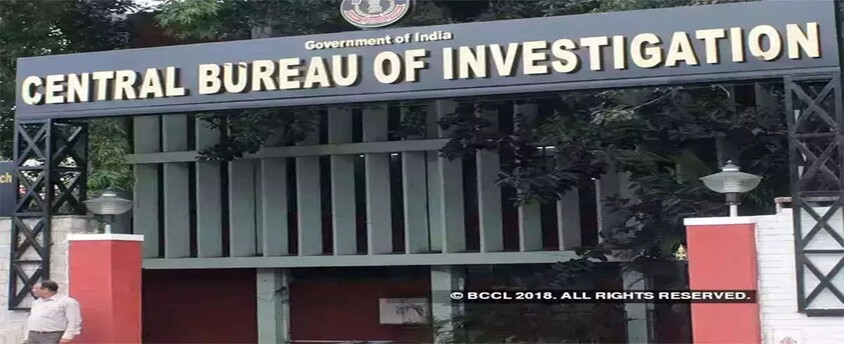
Why in News?
- The CBI has summoned Delhi Chief Minister Arvind Kejriwal in connection with the excise policy scam case on April 16.
Types of Consent Given by state government:
- There are two types of consent for a probe by the CBI.
These are: general and specific.
- When a state gives a general consent (Section 6 of the Delhi Special Police Establishment Act) to the CBI for probing a case, the agency is not required to seek fresh permission every time it enters that state in connection with investigation or for every case.
- When a general consent is withdrawn, CBI needs to seek case-wise consent for investigation from the concerned state government. If specific consent is not granted, the CBI officials will not have the power of police personnel when they enter that state.
- This hurdle impedes seamless investigation by the CBI.
- A general consent is given to facilitate that seamless investigation in a case of corruption or violence.
Issue of Withdrawal of general Consent by States:
- Recently it has been seen that various states like Andhra Pradesh and West Bengal governments have withdrawn their general consent as a result of tussle between Centre and States.
Impact of withdrawal:
- It means the CBI will not be able to register any fresh case involving a central government official or a private person stationed in the states who withdrew their general consent, without getting case-specific consent.
- In simple terms withdrawal of general consent simply means that CBI officers will lose all powers of a police officer as soon as they enter the state unless the state government has allowed them.
- It will have no impact on investigation of cases already registered with CBI as old cases were registered when general consent existed.
What was the Calcutta High Court’s earlier verdict over CBI investigation in the stae affairs?
- Calcutta High Court recently ruled in a case of illegal coal mining and cattle smuggling being investigated by the CBI, that the central agency cannot be stopped from probing an employee of the central government in another state. The order has been challenged in the Supreme Court.
- In Vinay Mishra vs the CBI, Calcutta HC ruled in July this year that corruption cases must be treated equally across the country, and a central government employee could not be “distinguished” just because his office was located in a state that had withdrawn general consent.
- The HC also said that withdrawal of consent would apply in cases where only employees of the state government were involved.
Issues with CBI Autonomy:
- After the 2018 amendments to the Prevention of Corruption Act, 1988, the Centre has come to exercise power over the CBI not just administratively, but also legally.
- In 2018, the government pushed through Parliament amendments to Section 17A of the Act making it mandatory for the CBI to seek the Centre’s permission before registering a case of corruption against any government servant.
About Delhi Special Police Establishment Act:
- The Central Bureau of Investigation traces its origin to the Special Police Establishment (SPE) which was set up in 1941 by the Government of India.
- The functions of the SPE then were to investigate cases of bribery and corruption in transactions with the War & Supply Deptt. Of India during World War II.
- Even after the end of the War, the need for a Central Government agency to investigate cases of bribery and corruption by Central Government employees was felt.
- The Delhi Special Police Establishment Act was therefore brought into force in 1946. The CBI’s power to investigate cases is derived from this Act.
Lokayukta
05, Apr 2023

Why in News?
- The Kerala Lokayukta, has referred a case related to alleged nepotism and anomalies in the Chief Minister’s Distress Relief Fund (CMDRF) to a three-member full bench for investigation.
What is Lokayukta?
- The Lokayukta is the Indian Parliamentary Ombudsman, executed into power, through and for, each of the State Governments of India.
- It is an anti-corruption authority. The object of Lokayukta system in a state is to make investigation of grievances, allegations against public servants.
- The origin of the Lokayukta can be drawn to the Ombudsman in Scandinavian countries.
- In India, the Administrative Reforms Commission, (1966-70), had recommended the creation of the Lokpal at the Centre and Lokayukta in the states.
- Before the passing of the Lokpal and Lokayuktas Act in 2013, several states in India passed laws for creating the Institution of ‘Lokayukta’.
- Maharashtra was first in this respect with its Lokayukta body established in 1971.
- The lokayukta and upalokayukta are appointed by the Governor of the state. While appointing, the governor in most of the states consults
(a) the chief justice of the state high court, and
(b) the leader of Opposition in the state legislative assembly.
- In most of the states, the term of office fixed for lokayukta is of 5 years duration or 65 years of age, whichever is earlier. He is not eligible for reappointment for a second term.
Issues Related to Lokayukta:
- No Clear Legislation:
- The Lokpal and Lokayuktas Act 2013 only has one section on Lokayukta, which mandates that states must pass the Lokayukta Act within one year and there is no information about their makeup, powers, or other features.
- States, in fact, have complete autonomy over how their own Lokayuktas are appointed, how they work, and under what conditions they serve.
- Delay in Resolution:
- One of the major challenges faced by the Lokayukta is the delay in the investigation and resolution of complaints.
- The Lokayukta is also dependent on the state government for funding and infrastructure, which can lead to interference and lack of independence.
Way Forward:
- Strengthening the Lokpal and Lokayukta Act: The Lokpal and Lokayukta Act should be amended to provide more powers to the Lokayukta, such as the power to investigate and prosecute cases of corruption against all public servants, including the Chief Minister and the judiciary.
- Ensure Adequate Resources and Staffing: The Lokayukta offices across the country need to be adequately staffed and resourced to enable them to effectively carry out their mandate.
- Enhance Accountability and Transparency: The Lokayukta should be made more accountable and transparent in its functioning. It should regularly publish reports on its activities, investigations, and outcomes.
Bilkis Bano Case
28, Mar 2023

Why in News?
- The Supreme Court has recently sought a response from the Centre, Gujarat Government and others on a plea filed by Bilkis Bano, who was gang-raped and seven members of her family were killed during the 2002 post-Godhra riots.
What is Remission?
- The suspension is the stay or postponement of the execution of the sentence.
- In remission, the duration of the sentence is reduced, without changing the nature of the sentence.
- In remission, the nature of the sentence is remained untouched, while the duration is reduced i.e. the rest of the sentence need not be undergone.
- The effect of the remission is that the prisoner is given a certain date on which he shall be released and the eyes of the law he would be a free man.
- However, in case of breach of any of the condition of remission, it will be cancelled and the offender has to serve the entire term for which he was originally sentenced.
Constitutional provisions for Remission:
- ‘Prisons’ is a State subject under the State List of the Seventh Schedule of the Constitution.
- Indian laws provide pardoning power sourcing from statuary and constitutional authorities.
- By virtue of Article 72 and 161 of the Constitution of India, the President and Governor can grant pardon, to suspend, remit or commute a sentences passed by the courts.
What are the new norms?
- The prisoners who would qualify for premature release under the scheme are:
- Women and transgender convicts of ages 50 and above
- Male convicts of 60 and above who have completed 50% of their total sentence period without counting the period of general remission earned
- Physically challenged or disabled convicts with 70% disability and more who have completed 50% of their total sentence period
- Terminally ill convicts
- Convicted prisoners who have completed two-thirds (66%) of their total sentence
- Poor or indigent prisoners who have completed their sentence but are still in jail due to non-payment of fine imposed on them by waiving off the fine
- Persons who committed an offence at a young age (18-21) and with no other criminal involvement or case against them and who have completed 50% of their sentence period would also be eligible for the remission
Exceptions to these norms:
- Following persons would not be eligible for the grant of special remission:
- Persons convicted with death sentence or where death sentence has been commuted to life imprisonment or persons convicted for an offence for which punishment of death has been specified as one of the punishments
- Persons convicted with sentence of life imprisonment
- Convicts involved in terrorist activities or persons convicted under the Terrorist and Disruptive (Prevention) Act, 1985, Prevention of Terrorist Act, 2002, Unlawful Activities (Prevention) Act, 1967, Explosives Act, 1908, National Security Act, 1982, Official Secrets Act, 1923, and Anti-Hijacking Act, 2016
Central Bureau of Investigation
27, Mar 2023
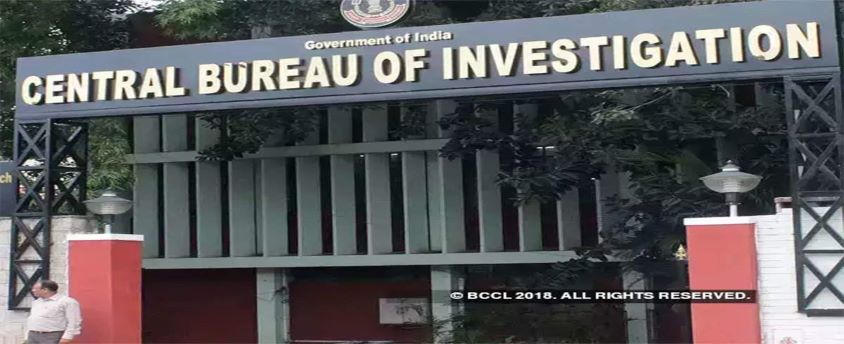
Why in News?
- The Parliamentary Committee on Personnel, Public Grievances, Law and Justice, in view of withdrawal of general consent for CBI probe by many states, has said that the existing law governing the CBI has “many limitations” and needs to be replaced with a new legislation to define its status, functions, and powers.
Types of Consent Given by state government:
- There are two types of consent for a probe by the CBI. These are: general and specific.
- When a state gives a general consent (Section 6 of the Delhi Special Police Establishment Act) to the CBI for probing a case, the agency is not required to seek fresh permission every time it enters that state in connection with investigation or for every case.
- When a general consent is withdrawn, CBI needs to seek case-wise consent for investigation from the concerned state government. If specific consent is not granted, the CBI officials will not have the power of police personnel when they enter that state.
- This hurdle impedes seamless investigation by the CBI. A general consent is given to facilitate that seamless investigation in a case of corruption or violence.
Issue of Withdrawal of general Consent by States:
- Recently it has been seen that various states like Andhra Pradesh and West Bengal governments have withdrawn their general consent as a result of tussle between Centre and States.
Impact of withdrawal:
- It means the CBI will not be able to register any fresh case involving a central government official or a private person stationed in the states who withdrew their general consent, without getting case-specific consent.
- In simple terms withdrawal of general consent simply means that CBI officers will lose all powers of a police officer as soon as they enter the state unless the state government has allowed them.
- It will have no impact on investigation of cases already registered with CBI as old cases were registered when general consent existed.
What was the Calcutta High Court’s earlier verdict over CBI investigation in the state affairs?
- Calcutta High Court recently ruled in a case of illegal coal mining and cattle smuggling being investigated by the CBI, that the central agency cannot be stopped from probing an employee of the central government in another state. The order has been challenged in the Supreme Court.
- In Vinay Mishra vs the CBI, Calcutta HC ruled in July this year that corruption cases must be treated equally across the country, and a central government employee could not be “distinguished” just because his office was located in a state that had withdrawn general consent.
- The HC also said that withdrawal of consent would apply in cases where only employees of the state government were involved.
Issues with CBI Autonomy:
- After the 2018 amendments to the Prevention of Corruption Act, 1988, the Centre has come to exercise power over the CBI not just administratively, but also legally.
- In 2018, the government pushed through Parliament amendments to Section 17A of the Act making it mandatory for the CBI to seek the Centre’s permission before registering a case of corruption against any government servant.
About Delhi Special Police Establishment Act:
- The Central Bureau of Investigation traces its origin to the Special Police Establishment (SPE) which was set up in 1941 by the Government of India.
- The functions of the SPE then were to investigate cases of bribery and corruption in transactions with the War & Supply Deptt. Of India during World War II.
- Even after the end of the War, the need for a Central Government agency to investigate cases of bribery and corruption by Central Government employees was felt.
- The Delhi Special Police Establishment Act was therefore brought into force in 1946. The CBI’s power to investigate cases is derived from this Act.
SC on Article 142
07, Mar 2023

Why in News?
- Recently, the Supreme Court (SC) under Article 142 ruled that the lawyers and professionals with 10 years of experience will be eligible for appointment as President and member of the state consumer commission and district forums.
About the News:
- The SC upheld the Bombay High Court judgement quashing the provisions of Consumer Protection Rules, 2020, under section 101 of Consumer Protection Act 2019, which prescribe a minimum professional experience of 20 years and 15 years for adjudicating members to the State consumer commissions and District forums respectively.
What is the Court’s Ruling?
- The Central government and the state governments concerned have to come up with an amendment in the Consumer Protection (Qualification for appointment, method of recruitment, procedure of appointment, term of office, resignation and removal of President and Members of State Commission and District Commission) Rules, 2020 to provide for 10 years’ experience to become eligible for appointment as President and member of the state commission and district forums instead of 20 years and 15 years respectively.
- Till suitable amendments are made, the Lawyers and professionals with a bachelor’s degree who has 10 years of experience in consumer affairs, law, public affairs, administration, economics, commerce, industry, finance, management, engineering, technology, public health or medicine will be eligible for appointment as President and member of the state consumer commission and district forums.
- It also introduced written exams and viva voce to check the candidates’ performance.
What is Article 142?
- Article 142 provides discretionary power to the Supreme Court as it states that the SC in the exercise of its jurisdiction may pass such decree or make such order as is necessary for doing complete justice in any cause or matter pending before it.
Constructive Application:
- In the early years of the evolution of Article 142, the general public and the lawyers both lauded the SC for its efforts to bring complete justice to various deprived sections of society or to protect the environment.
- The Cleansing of Taj Mahal and justice to many undertrials is a result of the invocation of this article only.
Cases of Judicial Overreach:
- In recent years, there have been several judgments of the Supreme Court wherein it has been foraying into areas which had long been forbidden to the judiciary by reason of the doctrine of ‘separation of powers’, which is part of the basic structure of the Constitution. One such example is:
- The ban on the sale of alcohol along national and state highways: While the notification by the central government prohibited liquor stores along National Highways only, the Supreme Court put in place a ban on a distance of 500 metres by invoking Article 142.
- Additionally, and in the absence of any similar notification by any of the State governments, the court extended the ban to State highways as well.
- Such judgments have created uncertainty about the discretion vested in the court to invoke Article 142 where even fundamental rights of individuals are being ignored.
Manual Scavenging in India
27, Feb 2023

Why in News?
- The Supreme Court has directed the government to place on record within six weeks the steps taken by it to implement its nearly 10-year-old judgment to end manual scavenging and prevent future generations from the “inhuman practice” while making entry into sewers without safety gear a crime even in emergency situations.
What does the act says?
- The act prohibits the employment of manual scavengers, manual cleaning of sewers and septic tanks without protective equipment, and the construction of insanitary latrines.
- It seeks to rehabilitate manual scavengers and provide for their alternative employment.
- Each local authority, cantonment board and railway authority is responsible for surveying insanitary latrines within its jurisdiction. They shall also construct a number of sanitary community latrines.
- The District Magistrate and the local authority shall be the implementing authorities. Offences under the Act shall be cognizable and non-bailable and may be tried summarily.
What does the previous report says?
- According to the National Commission of Safai Karamcharis (NCSK), a total of 53,598 people, of which 29,923 were in Uttar Pradesh alone had been identified as engaged in manual scavenging after surveys in 2013 and 2018.
- Though most of the sewer death compensation had been paid but states like Gujarat, Maharashtra is yet to pay compensation.
- Since 1993, a total of 926 deaths related to the manual scavenging is reported in the country, out of which 172 families are yet to receive compensation.
- Tamil Nadu reported the highest number of deaths but has paid compensation in all but seven of the 234 cases.
- Gujarat has the highest number of cases where the compensation amount was not paid followed by Maharashtra.
- Currently, one-time cash assistance, capital subsidy and skill development training are provided to the identified manual scavengers.
National Commission of Safai Karamcharis
- The National Commission for Safai Karamcharis (NCSK) was constituted on 12th August 1994 as a statutory body by an Act of Parliament viz. ‘National Commission for Safai Karamcharis Act, 1993’.
- The act “The National Commission for Safai Karamcharis Act, 1993” lapsed in February 2004.
- The Commission is acting as a non-statutory body of the Ministry of Social Justice and Empowerment whose tenure is extended from time to time through Government Resolutions.
Why Manual Scavenging is still prevailing?
- Despite the most stringent penal provisions in the law against manual scavenging, it continues in parts of India largely due to governmental indifference and social prejudice.
- The continued presence of insanitary latrines, of which there are about 2.6 million that require cleaning by hand, according to Safai Karamchari Andolan.
- Many communities still regard the presence of a sanitary toilet inside the house as physical pollution.
- The entrenched belief in the caste system that assumes people belonging to a particular caste group will readily perform the stigmatized task of emptying latrines.
- The state governments are not keen to demolish and rebuild old facilities lacking sanitation, or conduct a full census of both the latrines and the people engaged in clearing such waste.
Way Forward:
- With Swachh Bharat Mission identified as a top priority area by the 15th Finance Commission and funds available for smart cities and urban development providing for a strong case to address the problem of manual scavenging.
- To address the social sanction behind manual scavenging, it is required first to acknowledge and then understand how and why manual scavenging continues to be embedded in the caste system.
- The state and society need to take active interest in the issue and look into all possible options to accurately assess and subsequently eradicate this practice.
EPFO Staff, Pensioners seek clarity on circular to implement SC verdict
03, Jan 2023

Why in News?
- The headquarters of the Employees Provident Fund Organisation (EPFO) is likely to come up with yet another circular on implementing the recent Supreme Court order on higher pension.
What was the SC’s Judgement?
- Under Article 142, the Supreme Court ruling gives EPFO members, who have availed of the EPS, another opportunity over the next four months to opt and contribute up to 8.33% of their actual salaries as against 8.33% of the pensionable salary capped at Rs 15,000 a month towards pension.
- Under the pre-amendment scheme, the pensionable salary was computed as the average of the salary drawn during the 12 months prior to exit from membership of the Pension Fund. The amendments raised this to an average of 60 months prior to exit from the membership of the Pension Fund.
- The court held the amendment requiring members to contribute an additional 1.16 % of their salary exceeding Rs 15,000 a month as ultra vires the provisions of the Employees’ Provident Funds and Miscellaneous Provisions Act, 1952.
What are the Implications?
- People who have subscribed to EPF will be able to get pension on their full salary instead of Rs. 15000 cap.
- Employees and Employers, who have contributed to the EPF without any approval from Assistant Provident Commissioner, may not get the benefit of judgment.
- Amendment done in 2014 may remain applicable to the companies which manage their EPF corpus through trusts.
What is EPS?
- Employees’ Pension Scheme 1995 or EPS-95 is a social security scheme which was introduced in November 19, 1995 by the EPFO.
- The scheme entitles the employees working in the organised sector for a pension after their retirement at the age of 58 years.
Who is eligible for EPS?
- All employees who are eligible for the EPF scheme are be eligible for EPS however, the benefits of the EPS can be availed only if the employee has been in service for at least 10 years (this does not have to be continuous service). The scheme’s benefits are available to both existing as well as new EPF members.
Who contributes to EPS?
- Both the employee and the employer contribute 12 per cent of the employee’s basic salary and Dearness Allowance (DA) to the EPF. While the entire portion of employee’s contribution goes to EPF, the employer’s contribution goes to EPS at a rate of 8.33 per cent.
What are the benefits under EPS?
- Pension on retirement at the age of 58 years: An EPS member becomes eligible for pension once they retire at the age of 58 years. However, it is mandatory for them to be in service for at least 10 years before turning 58 and availing pension benefits. An EPS Scheme Certificate is generated which can be used to fill Form 10D for withdrawing the monthly pension.
- Complete withdrawal on leaving service before becoming eligible for monthly pension: If a member is not able to remain in service for 10 years before turning 58 years old, he/she can withdraw the complete sum invested so far after turning 58 years by filling Form 10C. However, he/she will not get monthly pension benefits post retirement.
- Pension on total disablement during the service: An EPFO member who becomes disabled permanently is entitled to a monthly pension irrespective of the fact that he/she has not served the pensionable service period. In this case, the employer has to deposit funds in the concerned employee’s EPS account for at least one month to be eligible for the pension.
- The member becomes eligible for monthly pension from the date of permanent disablement and is paid for lifetime. However, the member may have to undergo a medical examination to determine whether he/she is unfit for their job before becoming disabled.
- Family pension on the death of the member: A member’s family becomes eligible for the pension benefits in the following cases: 1) In case of death of the member while in service and the employer has deposited funds in his EPS account for at least one month 2) In case the member has completed 10 years of service and dies before attaining 58 years of age 3) In case of death of the member after the commencement of the monthly pension.
Manual Scavenging Deaths in India
16, Dec 2022

Why in News?
- Recently, the Ministry of Social Justice and Empowerment (MoSJ&E) told Lok Sabha that no person had died from Manual Scavenging in the last three years (2019 to 2022).
About the News:
- A total of 233 people had died “due to accidents while undertaking hazardous cleaning of sewer and septic tanks’ in this time period.
What does the act says?
- The act prohibits the employment of manual scavengers, manual cleaning of sewers and septic tanks without protective equipment, and the construction of insanitary latrines.
- It seeks to rehabilitate manual scavengers and provide for their alternative employment.
- Each local authority, cantonment board and railway authority is responsible for surveying insanitary latrines within its jurisdiction. They shall also construct a number of sanitary community latrines.
- The District Magistrate and the local authority shall be the implementing authorities. Offences under the Act shall be cognizable and non-bailable and may be tried summarily.
What does the previous report says?
- According to the National Commission of Safai Karamcharis (NCSK), a total of 53,598 people, of which 29,923 were in Uttar Pradesh alone had been identified as engaged in manual scavenging after surveys in 2013 and 2018.
- Though most of the sewer death compensation had been paid but states like Gujarat, Maharashtra is yet to pay compensation.
- Since 1993, a total of 926 deaths related to the manual scavenging is reported in the country, out of which 172 families are yet to receive compensation.
- Tamil Nadu reported the highest number of deaths but has paid compensation in all but seven of the 234 cases.
- Gujarat has the highest number of cases where the compensation amount was not paid followed by Maharashtra.
- Currently, one-time cash assistance, capital subsidy and skill development training are provided to the identified manual scavengers.
National Commission of Safai Karamcharis
- The National Commission for Safai Karamcharis (NCSK) was constituted on 12th August 1994 as a statutory body by an Act of Parliament viz. ‘National Commission for Safai Karamcharis Act, 1993’.
- The act “The National Commission for Safai Karamcharis Act, 1993” lapsed in February 2004.
- The Commission is acting as a non-statutory body of the Ministry of Social Justice and Empowerment whose tenure is extended from time to time through Government Resolutions.
Why Manual Scavenging is still prevailing?
- Despite the most stringent penal provisions in the law against manual scavenging, it continues in parts of India largely due to governmental indifference and social prejudice.
- The continued presence of insanitary latrines, of which there are about 2.6 million that require cleaning by hand, according to Safai Karamchari Andolan.
- Many communities still regard the presence of a sanitary toilet inside the house as physical pollution.
- The entrenched belief in the caste system that assumes people belonging to a particular caste group will readily perform the stigmatized task of emptying latrines.
- The state governments are not keen to demolish and rebuild old facilities lacking sanitation, or conduct a full census of both the latrines and the people engaged in clearing such waste.
Way Forward:
- With Swachh Bharat Mission identified as a top priority area by the 15th Finance Commission and funds available for smart cities and urban development providing for a strong case to address the problem of manual scavenging.
- To address the social sanction behind manual scavenging, it is required first to acknowledge and then understand how and why manual scavenging continues to be embedded in the caste system.
- The state and society need to take active interest in the issue and look into all possible options to accurately assess and subsequently eradicate this practice.
Private Member Bill seeks PM-Led Panel for selecting Chief Election Commissioner
13, Dec 2022

Why in News?
- Recently, a private member’s Bill was introduced in Lok Sabha seeking to make Election Commission (EC) of India responsible for regulating and monitoring the internal operations of political parties in the country.
Background:
- The bill comes at a time when the Supreme Court is hearing petitions on the need for reforms in the appointment of Chief Election Commissioner (CEC) and the Election Commissioners (ECs).
- It was argued that the internal functioning and structures of a large number of political parties have become very “opaque and ossified” and there is a need to make their functioning transparent, accountable and rule based.
What are the Highlights of the Bill?
- On Appointment of CEC:
- It also seeks the members of the EC, including the Chief Election Commissioners, to be appointed by a panel consisting of the Prime Minister, Union Home Minister, Leader of Opposition or floor leader in Lok Sabha, Leader of Opposition or floor leader in Rajya Sabha, the Chief Justice of India and two senior most judges of the Supreme Court.
- Tenure for CEC:
- The Bill envisages a fixed tenure of six years for the CEC and EC and three years from the date of appointment for the Regional Commissioners.
- Removal Procedure for CEC:
- They should not be removed from office except in accordance with the procedure laid down for the removal of a SC Judge.
- Also, after retirement, they should not be eligible for any reappointment to any office under the Government of India, State Governments and the Constitution.
- Procedure in Case of Non-Compliance:
- If any registered political party fails to comply with the advisories, duration and instructions issued by the ECI with regard to their internal functions, the recognition of such political party as a State or National may be withdrawn including any other action as the Election Commission deems fit under section 16A of the Election Symbols (Reservation and Allotment) Order 1968.
About the Election Commission of India (ECI):
- It is a permanent constitutional body established in 1950 to conduct and regulate elections in the country.
- Part XV (Article 324-329) of the Indian Constitution: It deals with elections and establishes a commission for these matters.
- Article 324 of the Constitution provides that the power of superintendence, direction and control of elections to Parliament, state legislatures, the office of the President of India, and the office of Vice-President of India shall be vested in the election commission.
- Thus, the Election Commission is an all-India body in the sense that it is common to both the Central government and the state governments.
- Being a constitutional authority, Election Commission is amongst the few institutions which function with both autonomy and freedom, along with the country’s higher judiciary, UPSC and CAG.
- It is a multi-member body (1 CEC + 2 ECs) and the tenure of election commissioners is not prescribed by the Indian Constitution.
- The CEC of India can be removed from their office in a manner similar to the removal of a judge of the SC of India, while other ECs can be removed by the President of India on the recommendation of the CEC.
- A CEC has never been impeached in India.
What has the SC said about the Election Commissioners?
- The Constitution of India has vested vast powers on the shoulders of the CEC and the 2 Election Commissioners.
- Apart from competence, the character is crucial, so that those appointed as Election Commissioners will not allow themselves to be bulldozed.
- In the absence of a law to oversee such appointments, the silence of the Indian Constitution is being exploited by all.
- The government assures that the person nominated does not serve the full six years by picking someone close to 65, thus undermining independence.
What was the government’s reply?
- There is no vacuum in the Constitution on the issue.
- If the Constitution takes a position despite multiple ideas put forward by the original Constituent Assembly, that position cannot be contested.
- The separation of powers cannot be challenged, as it is the basic feature of the Constitution.
- This matter is for Parliament to debate and not the court.
What was the suggestion given by the SC?
- An appointment committee including the Chief Justice of India to appoint the Election Commissioners to ensure neutrality.
Bilkis Bano Case
01, Dec 2022

Why in News?
- Chief Justice of India D. Y. Chandrachud recently agreed to look into the listing of two petitions filed by Bilkis Bano, who was gangraped in the Gujarat riots, against the Gujarat Government’s decision to prematurely release 11 convicts serving life sentence in her case.
What is Remission?
- The suspension is the stay or postponement of the execution of the sentence.
- In remission, the duration of the sentence is reduced, without changing the nature of the sentence.
- In remission, the nature of the sentence is remained untouched, while the duration is reduced i.e. the rest of the sentence need not be undergone.
- The effect of the remission is that the prisoner is given a certain date on which he shall be released and the eyes of the law he would be a free man.
- However, in case of breach of any of the condition of remission, it will be cancelled and the offender has to serve the entire term for which he was originally sentenced.
Constitutional provisions for Remission:
- ‘Prisons’ is a State subject under the State List of the Seventh Schedule of the Constitution.
- Indian laws provide pardoning power sourcing from statuary and constitutional authorities.
- By virtue of Article 72 and 161 of the Constitution of India, the President and Governor can grant pardon, to suspend, remit or commute a sentences passed by the courts.
What are the new norms?
- The prisoners who would qualify for premature release under the scheme are:
- Women and transgender convicts of ages 50 and above
- Male convicts of 60 and above who have completed 50% of their total sentence period without counting the period of general remission earned
- Physically challenged or disabled convicts with 70% disability and more who have completed 50% of their total sentence period
- Terminally ill convicts
- Convicted prisoners who have completed two-thirds (66%) of their total sentence
- Poor or indigent prisoners who have completed their sentence but are still in jail due to non-payment of fine imposed on them by waiving off the fine
- Persons who committed an offence at a young age (18-21) and with no other criminal involvement or case against them and who have completed 50% of their sentence period would also be eligible for the remission
Exceptions to these norms:
- Following persons would not be eligible for the grant of special remission:
- Persons convicted with death sentence or where death sentence has been commuted to life imprisonment or persons convicted for an offence for which punishment of death has been specified as one of the punishments
- Persons convicted with sentence of life imprisonment
- Convicts involved in terrorist activities or persons convicted under the Terrorist and Disruptive (Prevention) Act, 1985, Prevention of Terrorist Act, 2002, Unlawful Activities (Prevention) Act, 1967, Explosives Act, 1908, National Security Act, 1982, Official Secrets Act, 1923, and Anti-Hijacking Act, 2016
SC calls out centre over short tenures of CEC
24, Nov 2022

- According to the Supreme Court, the government does not give much importance to Election Commissioners’ independence, as evidenced by the reduction in tenures of Chief Election Commissioners (CECs) from over 8 years (in the 1950s) to just a few 100 days (after 2004).
Background:
- Presently, Election Commissioners are appointed by the President of India, on the aid and advice of the Council of Ministers
- The Election Commission (Conditions of Service of Election Commissioners and Transaction of Business) Act, 1991, prescribes that the term of a CEC and Election Commissioner is 6 years or till the age of 65 years, whichever is earlier.
- Article 324 of the Indian Constitution, dealing with the appointment of Election Commissioners, called for the enactment of legislation to oversee such appointments, but the government had yet to do so.
- The SC was hearing petitions seeking reforms in the system of appointing Election Commissioners.
About the Election Commission of India (ECI):
- It is a permanent constitutional body established in 1950 to conduct and regulate elections in the country.
- Part XV (Article 324-329) of the Indian Constitution: It deals with elections and establishes a commission for these matters.
- Article 324 of the Constitution provides that the power of superintendence, direction and control of elections to Parliament, state legislatures, the office of the President of India, and the office of Vice-President of India shall be vested in the election commission.
- Thus, the Election Commission is an all-India body in the sense that it is common to both the Central government and the state governments.
- Being a constitutional authority, Election Commission is amongst the few institutions which function with both autonomy and freedom, along with the country’s higher judiciary, UPSC and CAG.
- It is a multi-member body (1 CEC + 2 ECs) and the tenure of election commissioners is not prescribed by the Indian Constitution.
- The CEC of India can be removed from their office in a manner similar to the removal of a judge of the SC of India, while other ECs can be removed by the President of India on the recommendation of the CEC.
- A CEC has never been impeached in India.
What has the SC said about the Election Commissioners?
- The Constitution of India has vested vast powers on the shoulders of the CEC and the 2 Election Commissioners.
- Apart from competence, the character is crucial, so that those appointed as Election Commissioners will not allow themselves to be bulldozed.
- In the absence of a law to oversee such appointments, the silence of the Indian Constitution is being exploited by all.
- The government assures that the person nominated does not serve the full six years by picking someone close to 65, thus undermining independence.
What was the government’s reply?
- There is no vacuum in the Constitution on the issue.
- If the Constitution takes a position despite multiple ideas put forward by the original Constituent Assembly, that position cannot be contested.
- The separation of powers cannot be challenged, as it is the basic feature of the Constitution.
- This matter is for Parliament to debate and not the court.
What was the suggestion given by the SC?
- An appointment committee including the Chief Justice of India to appoint the Election Commissioners to ensure neutrality.
Meghalaya withdraws General Consent from CBI
09, Mar 2022

Why in News?
- Meghalaya has withdrawn consent to the CBI to investigate cases in the state, becoming the ninth state to have taken this step.
About the News:
- Eight other states which had withdrawn consent to the CBI: Maharashtra, Punjab, Rajasthan, West Bengal, Jharkhand, Chhattisgarh, Kerala, and Mizoram.
- In November last year, the Supreme Court had expressed concern over a submission by the CBI that since 2018, around 150 requests for sanction to investigate had been pending with the eight state governments who had withdrawn general consent until then.
- The CBI is governed by the Delhi Special Police Establishment Act that makes consent of a state government mandatory for conducting investigation in that state.
Types of Consent Given by State Government:
- There are two types of consent for a probe by the CBI. These are: general and specific.
- When a state gives a general consent (Section 6 of the Delhi Special Police Establishment Act) to the CBI for probing a case, the agency is not required to seek fresh permission every time it enters that state in connection with investigation or for every case.
- When a general consent is withdrawn, CBI needs to seek case-wise consent for investigation from the concerned state government. If specific consent is not granted, the CBI officials will not have the power of police personnel when they enter that state.
- This hurdle impedes seamless investigation by the CBI. A general consent is given to facilitate that seamless investigation in a case of corruption or violence.
Issue of Withdrawal of General Consent by States:
- Recently it has been seen that various states like Andhra Pradesh and West Bengal Governments have withdrawn their general consent as a result of Tussle between Centre and States.
Impact of withdrawal:
- It means the CBI will not be able to register any fresh case involving a central government official or a private person stationed in the states who withdrew their general consent, without getting case-specific consent.
- In simple terms withdrawal of general consent simply means that CBI officers will lose all powers of a police officer as soon as they enter the state unless the state government has allowed them.
- It will have no impact on investigation of cases already registered with CBI as old cases were registered when General Consent Existed.
What was the Calcutta High Court verdict?
- Calcutta High Court recently ruled in a case of illegal coal mining and cattle smuggling being investigated by the CBI, that the central agency cannot be stopped from probing an employee of the Central Government in another state. The order has been challenged in the Supreme Court.
- In Vinay Mishra vs the CBI, Calcutta HC ruled in July this year that corruption cases must be treated equally across the country, and a central government employee could not be “distinguished” just because his office was located in a state that had withdrawn general consent.
- The HC also said that withdrawal of consent would apply in cases where only employees of the State Government were Involved.
Issues with CBI Autonomy:
- After the 2018 amendments to the Prevention of Corruption Act, 1988, the Centre has come to exercise power over the CBI not just administratively, but also legally.
- In 2018, the government pushed through Parliament amendments to Section 17A of the Act making it mandatory for the CBI to seek the Centre’s permission before registering a case of corruption against any Government servant.
About Delhi Special Police Establishment Act:
- The Central Bureau of Investigation traces its origin to the Special Police Establishment (SPE) which was set up in 1941 by the Government of India.
- The functions of the SPE then were to investigate cases of bribery and corruption in transactions with the War & Supply Deptt. Of India during World War II.
- Even after the end of the War, the need for a Central Government agency to investigate cases of bribery and corruption by Central Government employees was felt.
- The Delhi Special Police Establishment Act was therefore brought into force in 1946. The CBI’s power to investigate cases is derived from this Act.
Central Deputation of IAS Officials
23, Jan 2022
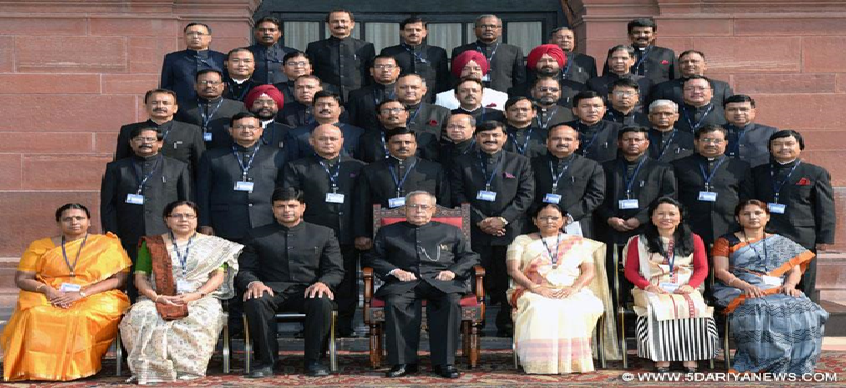
Why in News?
- The Centre has proposed amendments to the IAS (Cadre) Rules in order to exercise Greater Control in Central Deputation of IAS officials.
What is the issue?
- Central deputation has often been at the centre of tussles between the Centre and the states.
What is the Current Rule on Deputation?
- Central deputation in the Indian Administrative Service is covered under Rule-6 (1) of the IAS (Cadre) Rules-1954, inserted in May 1969.
- As per the rule:
- A cadre officer may, with the concurrence of the State Governments concerned and the Central Government, be deputed for service under the Central Government or another State Government or under a company, association or body of individuals, whether incorporated or not, which is wholly or substantially owned or controlled by the Central Government or by another State Government.
What happens in Case of Disagreement?
- In case of any disagreement, the matter shall be decided by the Central Government and the State Government or State Governments concerned shall give effect to the decision of the Central Government.
- However, Existing Rules did not mention any time limit for deciding on such disagreement.
What are the Proposed Amendments?
- The proposal will give greater say to the Centre.
- The amendments enable the Union government to seek the services of an Indian Administrative Service (IAS), Indian Police Service (IPS) and Indian Forest Service (IFoS) officer posted in a State even without the State Government’s Consent.
- The Centre will be able to relieve an officer from their cadre if the State government does not give effect to the Central Government’s Decision within the specified time.
- In case of any Disagreement, the matter shall be decided by the central government and the State Government or State Governments concerned shall give effect to the decision of the Central Government “within a specified time”.
- Services of an AIS officer with a specific domain expertise may be required for any important time-bound flagship programme or project.
What Necessitated these Amendments?
- Various state/joint cadres are not sponsoring adequate numbers of officers for central deputation, as part of the Central Deputation Reserve.
- As a result of this, the number of officers available for central deputation is not sufficient to meet the requirement at Centre.
How many officers are Working Under Deputation?
- Only 10% mid-level IAS officers were posted with the Union government in 2021, a sharp fall from 19% in 2014.
- The decrease in central deputation of IAS officers becomes even more stark as the total pool of such officers at this level expanded from 621 in 2014 to 1130 in 2021, an increase of around 80%.
- According to data available with the Department of Personnel and Training (DoPT), the number of central deputation reserve of IAS officers has gone down from 309 in 2011 to 223.
Inter-State River Water Disputes Act, 1956
19, Jan 2022
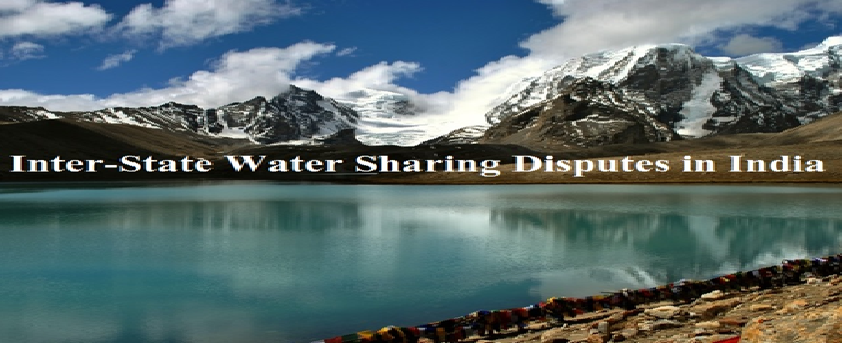
Why in News?
- Karnataka CM has recently observed that the time has come to revisit the Inter-State River Water Disputes Act as it creates more disputes than resolving them.
About the News:
- The chief minister’s statement comes at a time when Karnataka has been involved in inconstant fight with neighbouring Tamil Nadu, Maharashtra, Goa and Andhra Pradesh regarding inter-state water disputes concerning Cauvery, Mahadayi and Krishna rivers.
Need of the Hour:
- The multifold levels of addressing the inter-state water disputes are removed at one Single Stage.
- The solution should be on the basis of Maximum utility of a river basin Capacity and using Technology, and giving away all Political Considerations.
About Inter-state Water Dispute:
- Art 262 provides for the adjudication of inter-state water disputes. It has two following provisions:
- Parliament may by law provide for the adjudication of any dispute or complaint with respect to the use, distribution and control of waters of any inter-state river and river valley.
- Parliament may also provide that neither the Supreme Court nor any other court is to exercise jurisdiction in respect of any such dispute or complaint.
- Under the provisions of the act, the central government has enacted, River boards act (1956) and Inter-state water disputes act (1956).
- The river board act provides for the establishment of river boards for the regulation and Development of the Inter-state River and river valleys. Such a river board is established on the request of the State Governments Concerned.
- The inter-state water dispute act empowers the central government to set up an ad hoc tribunal for the adjudication of a dispute between the two or more states in relation to the water of an inter-state river. The decision of the tribunal would be final and binding. Furthermore, the act bars the SC and any other court to have jurisdiction in this matter.
Issues Surrounding the Interstate Water Dispute Act, 1956:
- The Inter State Water Dispute Act, 1956 which provides the legal framework to address such disputes suffers from many drawbacks as it does not fix any time limit for resolving river water disputes.
- Delays are on account of no time limit for adjudication by a Tribunal, no upper age limit for the Chairman or the Members, work getting stalled due to occurrence of any vacancy and no time limit for publishing the report of the Tribunal.
- The River Boards Act 1956, which is supposed to facilitate inter-state collaboration over water resource development, remained a ‘dead letter’ since its enactment.
- Surface water is controlled by Central Water Commission (CWC) and ground water by Central Ground Water Board of India (CGWB).
- Both bodies work independently and there is no common forum for Common Discussion with state governments on water Management.
NDRF GEARS UP FOR TWIN CHALLENGES – PANDEMIC AND MONSOON
30, Apr 2020
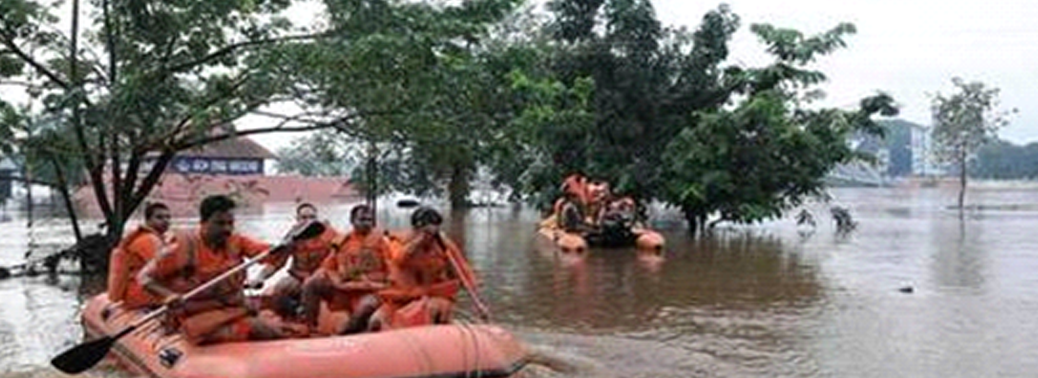
Why in News?
- With monsoon around the corner, the National Disaster Response Force (NDRF) is preparing to face the twin challenge of coronavirus (COVID-19) and floods in different parts of the country.
About the News:
- During the upcoming rainy season, managing the situation in areas that have been reporting COVID-19 cases, particularly in the hotspot and containment zones, will be an uphill task.
- The NDRF has taken note of the latest IMD warning of the likely formation of a low pressure area over the south Andaman Sea and the neighbourhood, which is likely to intensify into a depression during the subsequent 48 hours, triggering moderate and heavy to extreme rainfall in isolated areas.
About NDRF:
- The National Disaster Response Force (NDRF) is a specialised force constituted “for the purpose of specialist response to a threatening disaster situation or disaster” under the Disaster Management Act, 2005.
- The responsibility of managing disasters India is that of the State Government. The ‘Nodal Ministry’ in the central government for management of natural disasters is the Ministry of Home Affairs (MHA).
- National Disaster Response Force (NDRF) is under the National Disaster Management Authority.
- National Disaster Response Force (NDRF) is a force of 12 battalions, organised on Para-military lines, and manned by persons on deputation from the Para-military forces of India: three each from the BSF and CRPF and two each from CISF, ITBP and SSB.
- NDRF in addition to being able to respond to natural disasters has four battalions capable of responding to radiological, nuclear, biological and chemical disasters.
- The Apex Body for Disaster Management in India is the National Disaster Management Authority (NDMA). The Chairman of the NDMA is the Prime Minister.
Why it was Created?
- Two national calamities in quick succession in the form of Orissa Super Cyclone (1999) and Gujarat Earthquake (2001) brought about the realization of the need of having a specialist response mechanism at National Level to effectively respond to disasters. This realization led to the enactment of the DM Act on 26 Dec 2005.
What are the Roles and Mandate of NDRF?
- Specialized response during disasters.
- Proactive deployment during impending disaster situations.
- Acquire and continually upgrade its own training and skills.
- Liaison, Reconnaissance, Rehearsals and Mock Drills.
- Impart basic and operational level training to State Response Forces (Police, Civil Defence and Home Guards).
- Community Capacity Building Programme.
- Organize Public Awareness Campaigns.
NO MEETINGS OF SCS AND STS PANEL HELD FOR 3 YEARS
18, Mar 2020
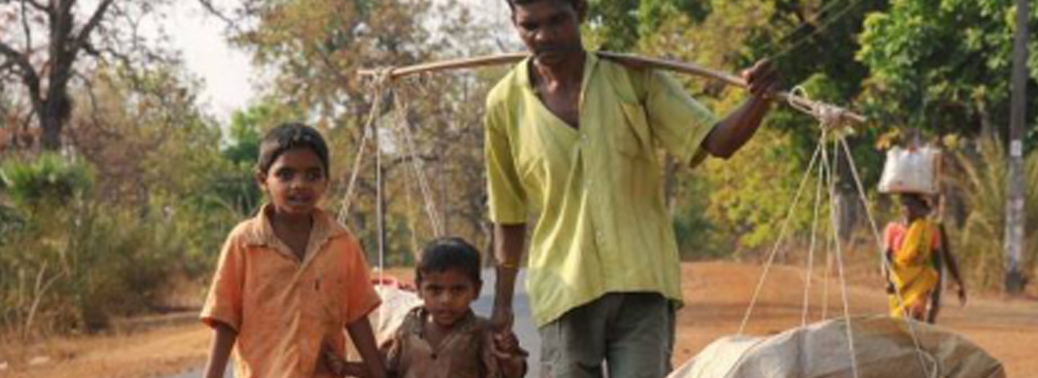
Why in News?
- According to the information provided by the Union Social Justice and Empowerment Ministry to Parliament, the State-level committees had not met even once in three years — 2016, 2017 and 2018.
About the News:
- The State-level committees meant to monitor the implementation of the Scheduled Castes and Scheduled Tribes (Prevention of Atrocities) Act, 1989of 25 States and Union Territories had not met even once in three years.
- The 1995 rules formed under the Act mandate the setting up of State and district-level vigilance and monitoring committees.
- The State-level committees, headed by the respective Chief Ministers, are supposed to meet twice a year, according to the rules.
What are the constitutional provisions against SC/ST Atrocities?
- Article 17 of the constitution prohibits the practice of untouchability.
- Article 46 promotes the educational and economic interests of SCs, STs, and other weaker sections of the society and protects them from social injustice and exploitation.
- Article 338– National Commission for Scheduled Castes
- Investigate and monitor all matters relating to the constitutional and other legal safeguards for the SCs and to evaluate their working.
- Inquire into specific complaints with respect to the deprivation of rights and safeguards of the SCs.
- 338-A– National Commission for Scheduled Tribes
- Its functions are the same as that of NCSC, but with respect to ST instead of SC.
About the Act:
- Creation of new types of offences that are neither present in the Indian Penal Code (IPC) nor in the Protection of Civil Rights Act 1955.
- It punishes crimes against people belonging to Scheduled Castes and Tribes.
- It vests special protections and rights with the victims.
- It creates Special Courts and special public prosecutor for speedier completion of cases.
- Commission of offences only by particular persons (by non-SCs on SCs and non-STs on STs).
- Punishment for public servant (non-SC/ST) in case of neglect of duties.
- Denial of anticipatory bail.
- Gives compensation, relief, and rehabilitation for victims of atrocities or their legal heirs.
- Mandatory and periodic monitoring system at District, State, and National level.
- Identification of atrocity prone zones.
- Ministry of Social Justice is the nodal ministry to enforce the provisions of the Act.
What are the states that did not met?
- The State-level committees in 25 States and Union Territories — Andhra Pradesh, Arunachal Pradesh, Bihar, Goa, Himachal Pradesh, Jharkhand, Madhya Pradesh, Manipur, Meghalaya, Mizoram, Nagaland, Odisha, Punjab, Rajasthan, Sikkim, Tamil Nadu, Telangana, Tripura, Uttar Pradesh, Uttarakhand, Andaman and Nicobar Islands, Dadra & Nagar Haveli, Daman & Diu, Delhi and Lakshadweep — had not held any meetings in the three years.
Measures to be Taken:
- Minimising the duration of trials.
- SC/ST commission should start a national helpline number for any harassment on the basis of caste.
- Improving the training of police officers in dealing with POA cases so that they can solve the cases without any pressure or prejudice.
- Increasing awareness about several legal remedies and different rights available to the marginalized community.
- Use of audio-video recording to collect evidence.
- Better forensics.
- State Protection of a witness.
- The government should take proactive measures to improve the participation of people from SC/ST community in decision making and government functioning.
Way Forward:
- The most crucial thing for ending discrimination and improving fraternity is a consistent societal action to change the entrenched caste rigidity.
- SC/ST Prevention of Atrocities Act (PoA act) only serves as a tool in this endeavour rather than an end in itself.
NATIONAL INTERLINKING OF RIVERS AUTHORITY
04, Mar 2020

Why in News?
- The Central government is working on the establishment of an exclusive body named National Interlinking of Rivers Authority (NIRA) to implement projects for linking rivers.
What is River Interlinking?
- The National River Linking Project (NRLP)formally known as the National Perspective Plan, envisages the transfer of water from water ‘surplus’ basins where there is flooding, to water ‘deficit’ basins where there is drought/scarcity, through inter-basin water transfer projects.
- ‘Surplus’ means that it is the extra water available in a river after it meets the humans’ requirement of irrigation, domestic consumption and industries thereby underestimating the need of the water for the river itself.
- The term ‘deficit’ has also been viewed in terms of humans only and not from the river’s perspective, which includes many other factors.
About the Proposal:
- The proposed body is expected to take up both inter-State and intra-State projects.
- It will also make arrangements for generating up funds, internally and externally.
- An updated draft Cabinet note has been circulated to other Ministries in the Central government.On receipt of comments, the note will be finalised by the Ministry of Jal Shakti and sent to the Union Cabinet for approval.
- The proposal for an apex body on river linking has been under discussion for the past 18 months. However, as of now, no specific timeline has been determined for the constitution of the Authority.
- Once approved, the projects will be pursued as national projects, wherein the Centre will absorb 90% of the cost and the States concerned the rest.
Currently who is responsible for the Interlinking of Rivers?
- The National Water Development Agency (NWDA) is responsible for the formulation of proposals of the linking of rivers.
- NWDA is the agency of the Union Ministry of Water Resources. It was set up in July, 1982 as autonomous society under the Societies Registration Act, 1860.
- It was established to carry out the water balance and other studies on a scientific and realistic basis for optimum utilisation of Water Resources of the Peninsular rivers system.
- Besides it was tasked to prepare feasibility reports and give concrete shape to Peninsular Rivers Development Component of National Perspective.
- In 1990, it was also entrusted with the task of Himalayan Rivers Development Component of National Perspectives.
- Recently, the functions of NWDA have been further modified and the work of preparation of detailed Project Reports (DPR) of various link proposals and Pre-feasibility Reports.
- It has been also entrusted to prepare feasibility reports of intra-State links as proposed by the States.
What are the Projects under Examination?
- As of now, six ILR projects — the Ken-Betwa, Damanganga- Pinjal, Par-Tapi-Narmada, Manas-Sankosh-Teesta-Ganga, Mahanadi-Godavari and Godavari-Cauvery (Grand Anicut) — have been under examination of the authorities.
- With regard to the peninsular rivers, the Centre has chosen to focus on the Godavari-Cauvery link than the earlier proposal to link the Mahanadi-Godavari-Krishna-Pennar-Cauvery Rivers. The latter has eluded consensus given reservations from Odisha.
What are the Benefits?
- A national water grid aims to connect various surplus rivers with deficient rivers.
- It aims to transfer excess water from water-rich to water-deficit regions.
- This is to help improve irrigation, increase water for drinking and industrial use.
- Mitigating drought and floods to an extent are also part of the objectives.
What are the Concerns?
- There are significant environmental concerns associated with inter-basin transfer. The ecology of every river is unique. Letting the waters of two rivers mix may affect biodiversity.
- Besides, it involves construction of a massive network of canals and dams, which would lead to large-scale displacement of people.
- It may make changes to agricultural patterns, and affect livelihoods.
- In addition, rainfall patterns are changing due to climate change.
- So the basins now supposed to be surplus, might cease to be so in few years.
- There are financial concerns as well, related to the projects. In 2001, the total cost for linking the Himalayan and peninsular rivers was estimated at Rs. 5,60,000 crores. The cost is now likely to be substantially higher.
- Also, the cost-benefit ratio might no longer be favourable.
Way Forward:
- The necessity and feasibility of river-interlinking should be seen on case to case basis, with adequate emphasis on easing out federal issues.
- The government should alternatively consider the National Waterways Project (NWP) which “eliminates” friction between states over the sharing of river waters since it uses only the excess flood water that goes into the sea unutilized.
- Local solutions (like better irrigation practice) and watershed management, should be focused on.
NATIONAL INVESTIGATION AGENCY (NIA)
02, Mar 2020
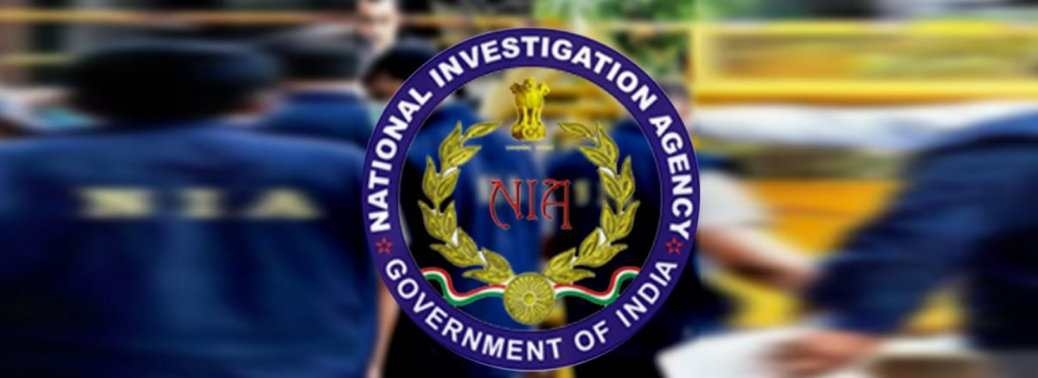
Context:
- Recently, a petition filed to order the National Investigation Agency (NIA)to find out the “anti-national forces” behind the agitations and to probe the role of People’s Front of India (PFI).
About NIA:
- It is constituted under the National Investigation Agency (NIA) Act, 2008.
- It is to investigate and prosecute offences:
- affecting the sovereignty, security and integrity of India, security of State, friendly relations with foreign States.
- against atomic and nuclear facilities.
- smuggling in High-Quality Counterfeit Indian Currency.
- It implements international treaties, agreements, conventions and resolutions of the United Nations, its agencies and other international organisations.
- Its objective is to combat terror in India. It acts as the Central Counter-Terrorism Law Enforcement Agency.
- Its headquarters is at New Delhi and branches located at Hyderabad, Guwahati, Kochi, Lucknow, Mumbai, Kolkata, Raipur and Jammu.
About the Mandate of NIA:
- The Central Government assign the cases in accordance with section VIof the NIA Act, 2008.
- The investigation of the cases is done by the Agency independently and placed before the NIA Special Court.
- The sanction is granted under the Unlawful Activities (Prevention) Act, 1967 UAPA based on the report of the ‘Authority’ constituted under section 45 (2) of the UAPA.
- It is empowered to deal with terror-related crimes across states without special permission from the states.
- To curb various aspects of terrorist financing, a Terror Funding and Fake Currency Cell (TFFC) has been created in the NIA.
- TFFC maintains a database of terror financing and cases of Fake Indian Currency Notes (FICN). It also conducts a part investigation into terror financing aspects of regular cases investigated by the NIA. Its Cell conducts verifications of bank accounts of the suspects that are linked with Naxalite groups.
- NIA also has an exclusive Left Wing Extremism (LWE)cell to effectively deal with cases related to terror financing aspects of Naxalite groups.
- The Ministry of Home Affairs (MHA) reviews the manpower, financial and infrastructure requirements of NIA from time to time.
About the NIA (Amendment) Bill, 2019:
- It was passed by Parliament amending the original Act of 2008.
- It seeks to allow the NIA to investigate the following additional offences:
- Human trafficking
- Manufacture or sale of prohibited arms
- Cyber-terrorism, and
- Offences under the Explosive Substances Act, 1908
About Jurisdiction-NIA:
- The officers have the same powers as other police officers in relation to the investigation of such offences, across India.
- They will have the power to investigate scheduled offences committed outside India, subject to international treaties and domestic laws of other countries.
- The central government may direct the NIA to investigate such cases as if the offence has been committed in India.
- The Special Court in New Delhi will have jurisdiction over these cases.
- Scheduled Offences are the list of offences specific to the acts such as the Atomic Energy Act, 1962, and h, which are to be investigated and prosecuted by NIA.
About Jurisdiction – Special Courts:
- The Government for the trial of Scheduled Offences, constitute one or more Special Courts under Section 11 and 22 of the NIA Act 2008.
- Composition: Special Court shall be presided over by a judge to be appointed by the Central Government on the recommendation of the Chief Justice of the High Court. The Central Government may, if required, appoint an additional judge or additional judges to the Special Court, on the recommendation of the Chief Justice of the High Court.
- It has all powers of the court of sessions under the Code of Criminal Procedure, 1973.
- Where any question arises as to the jurisdiction of any Special Court, it shall be referred to the Central Government whose decision in the matter shall be final.
- The Supreme Court can transfer a case pending before a Special Court to any other Special Court within that State or any other State in some exceptional cases where it is not feasible to conduct a peaceful, fair, impartial and speedy trial.
- Likewise, the High Court has the power to transfer a case pending before a Special Court in a State to any other Special Court within that State.
CENTRAL CONSUMER PROTECTION AUTHORITY
29, Feb 2020

Why in News?
- The government is all set to establish a Central Consumer Protection Authority to protect the rights of the consumer.
About Central Consumer Protection Authority (CCPA):
- The authority is being constituted under Section 10(1) of The Consumer Protection Act, 2019.
- Its aim is to protect the rights of the consumer by cracking down on unfair trade practices, and false and misleading advertisements that are detrimental to the interests of the public and consumers.
- It will be headquartered in the National Capital Region of Delhi but the central government may set up regional offices in other parts of the country.
What is its Composition?
- It will have a Chief Commissioner as head, and only two other commissioners as members— one of whom will deal with matters relating to goods while the other will look into cases relating to services.
- The CCPA will have an Investigation Wing that will be headed by a Director General.
- District Collectors too, will have the power to investigate complaints of violations of consumer rights, unfair trade practices, and false or misleading advertisements.
What are its Powers and Functions?
- Inquire or investigate into matters relating to violations of consumer rights or unfair trade practices suo motu, or on a complaint received, or on a direction from the central government.
- Recall goods or withdrawal of services that are “dangerous, hazardous or unsafe.
- Pass an order for refund the prices of goods or services so recalled to purchasers of such goods or services; discontinuation of practices which are unfair and prejudicial to consumer’s interest”.
- Impose a penalty up to Rs 10 lakh, with imprisonment up to two years, on the manufacturer or endorser of false and misleading advertisements. The penalty may go up to Rs 50 lakh, with imprisonment up to five years, for every subsequent offence committed by the same manufacturer or endorser.
- Ban the endorser of a false or misleading advertisement from making endorsement of any products or services in the future, for a period that may extend to one year. The ban may extend up to three years in every subsequent violation of the Act.
- File complaints of violation of consumer rights or unfair trade practices before the District Consumer Disputes Redressal Commission, State Consumer Disputes Redressal Commission, and the National Consumer Disputes Redressal Commission.
What are the other Penalties Imposed?
- If injury is not caused to a consumer, fine up to Rs 1 lakh with imprisonment up to six months.
- If injury is caused, fine up to Rs 3 lakh with imprisonment up to one year.
- If grievous hurt is caused, fine up to Rs 5 lakh with imprisonment up to 7 years.
- In case of death, fine of Rs 10 lakh or more with a minimum imprisonment of 7 years, extendable to imprisonment for life.
What are its Impacts?
- The setup of CCPA will ensure the protection of consumers as it imposes stringent punishments.
- It acts as a guardian for the consumers in all aspects.
- Fines and penalties in case of violation for the companies make the quality of the product and services more valuable.
ELECTIONS TO RAJYA SABHA
27, Feb 2020
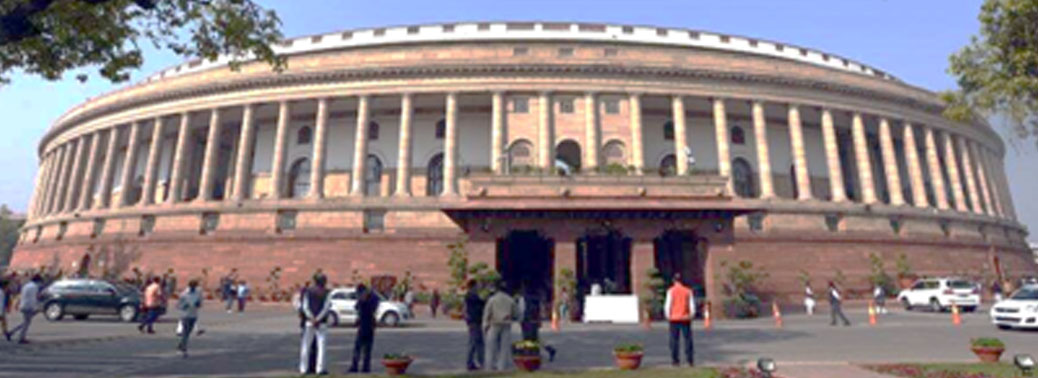
Why in News?
- The Election Commission has announced that elections to 55 Rajya Sabha seats will be held on March 26, 2020.
Highlights:
- Since Rajya Sabha MPs are elected by state MLAs, political parties with more MLAs are likely to send more MPs to the Upper House.
- Major changes, therefore, are expected in states that have seen a change of power in the last Assembly election.
- Therefore, the BJP is expected to lose seats in Madhya Pradesh, Chhattisgarh, and Rajasthan where it lost state elections.
- However, it will gain in Uttarakhand and Karnataka, where it came to power in 2017 and 2019 respectively.
- Overall, the BJP’s current strength in Rajya Sabha will likely remain undiminished.
- The Trinamool Congress and YSR Congress Party are expected to make significant gains in the 245-member Upper House after the elections.
Vacancies:
- These seats will be filled by representatives from 17 states.
- The terms of 51 members will end in April, 2020.
- The other four seats are already vacant.
- The strength of Rajya Sabha is 238 currently.
- As of now, the BJP has 82 Members in the Rajya Sabha, and the Congress 46. Of the retiring MPs, 18 are from the BJP, and 11 are from the Congress.
Eligibility:
- A member of the Rajya Sabha must:
- Be a citizen of India;
- Be at least 30 years old;
- Possess such other qualifications as may be prescribed in that behalf by or under any law made by Parliament.
System of election in Rajya Sabha:
- Rajya Sabha also known as Council of States consist of not more than 250 members of whom:
- 238 members are elected by MLAs of various States and Union Territories
- 12 members nominated by the President.
- Rajya Sabha is a permanent house because one third of members retire every 2 years and same number of members are elected.
- Its members are elected by the Legislative Assembly of States and Union territories by means of Single transferable vote through Proportional representation.
22ND LAW COMMISSION OF INDIA
20, Feb 2020
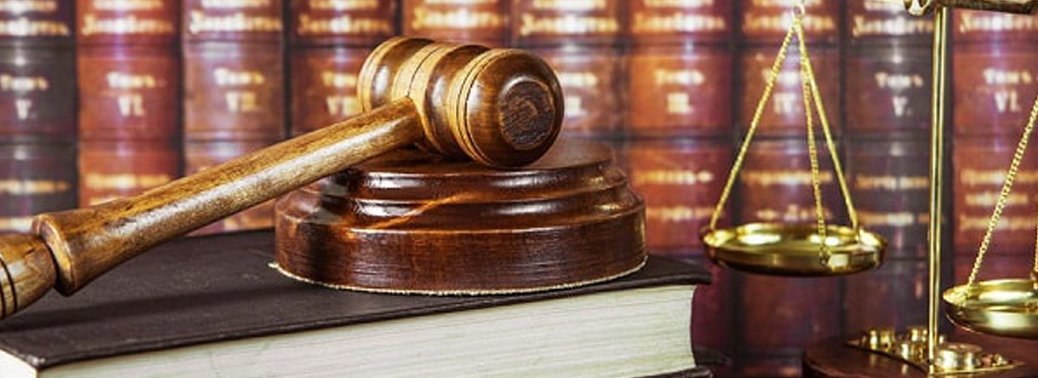
Why in News?
- The Union Cabinet has recently approved 22nd Law Commission of India for a period of three years from the date of publication of the Order of Constitution in the Official Gazette.
About Law Commission:
- Law Commission of India is neither a constitutional body nor a statutory body, it is an executive body established by an order of the Government of India. Its major function is to work for legal reforms.
- The Commission is established for a fixed tenure and works as an advisory body to the Ministry of Law and Justice.
- Its membership primarily comprises legal experts.
- The recommendations of the commission are not binding on the Government. They may be accepted or rejected. Action on the said recommendations depends on the ministries/departments, which are concerned with the subject matter of the recommendations.
History of Law Commission in India:
- Law Reform has been a continuing process particularly during the last 300 years or more in Indian history. In the ancient period, when religious and customary law occupied the field, the reform process had been ad hoc and not institutionalised through duly constituted law reform agencies.
- However, since the third decade of the nineteenth century, Law Commissions were constituted by the Government from time to time and were empowered to recommend legislative reforms to clarify, consolidate and codify particular branches of law where the Government felt the necessity for it.
- The First such Commission was established in 1834 under the Charter Act of 1833 under the Chairmanship of Lord Macaulay which recommended codification of the Penal Code and the Criminal Procedure Code.
- Thereafter, the second, third and fourth Law Commissions were constituted in 1853, 1861 and 1879 respectively which, during a span of fifty years contributed to enrich the Indian Statute Book with a large variety of legislations on the pattern of the then prevailing English Laws adapted to Indian conditions.
- The Indian Code of Civil Procedure, the Indian Contract Act, the Indian Evidence Act, the Transfer of Property Act, etc. are products of the first four Law Commissions.
Post-Independence Developments:
- After independence, the Constitution stipulated the continuation of pre-Constitution Laws under Article 372 until they are amended or repealed.
- There had been demands in Parliament and outside for establishing a Central Law Commission to recommend revision and updation of the inherited laws to serve the changing needs of the country.
- The Government of India established the First Law Commission of Independent India in 1955 with the then Attorney-General of India, Mr. M. C. Setalvad, as its Chairman. Since then twenty one more Law Commissions have been appointed, each with a three-year term.
The Functions of Law Commission:
- The Law Commission, on a reference made to it by the Central Government or suo-moto, undertakes research in law and review of existing laws in India for making reforms therein and enacting new legislations.
- It also undertakes studies and research for bringing reforms in the justice delivery systems for elimination of delay in procedures, speedy disposal of cases, reduction in the cost of litigation etc.
- The other functions of the Law Commission include:
- Review/Repeal of obsolete laws:Identification of laws which are no longer relevant and recommending for the repeal of obsolete and unnecessary enactments.
- Law and Poverty:Examines the Laws which affect the poor and carries out post-audit for socio-economic legislations.
- Suggesting enactment of New Legislation as may be necessary to implement the Directive Principles and to attain the objectives set out in the Preamble of the Constitution.
- Judicial Administration:Considering and conveying to the Government its views on any subject relating to law and judicial administration that may be specifically referred to it by the Government through the Ministry of Law and Justice (Department of Legal Affairs).
- Research:Considering the requests for providing research to any foreign countries as may be referred to it by the Government through the Ministry of Law & Justice (Department of Legal Affairs).
- Examine the existing laws with a view of promoting gender equality and suggesting amendments thereto.
- Examine the impact of globalization on food security, unemployment and recommend measures for the protection of the interests of the marginalized.
- Preparing and submitting to the Central Government, from time to time, reports on all issues, matters, studies and research undertaken by it and recommending in such reports for effective measures to be taken by the Union or any State.
- Performing such other functions as may be assigned to it by the Central Government from time to time.
- Before concretizing its recommendations, the Commission consults the nodal Ministry/Departments and such, other stakeholders as the Commission may deem necessary for the purpose.
Conclusion:
- In an era of globalisation and constantly evolving societies, Law Commission identifies the laws which are not in harmony with the existing climate, and laws which require change.
- It suggests suitable measures for quick redressal of citizens’ grievances, in the field of law and takes all necessary steps to make the poor benefit out of the legal process.
- Its presence has become even more relevant in Recent Times.
INDIAN NATIONAL COMMISSION FOR COOPERATION WITH UNESCO (INCCU)
01, Feb 2020
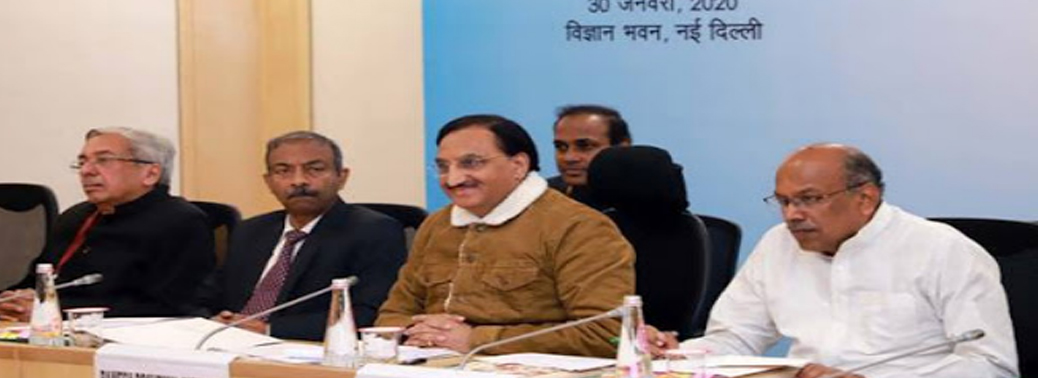
Why in News?
- Union HRD Minister chairs a meeting of the Indian National Commission for Cooperation with UNESCO in New Delhi.
INCCU:
- The INCCU is a governmental body formed by the Government of India which functions under the Department of Secondary and Higher Education in the Ministry of Human Resource Development.
- The objective of the Commission is to advise the Government in matters relating to the UNESCO.
- India has been a member of the United Nations Educational, Scientific, Cultural Organization (UNESCO), a specialized agency of the United Nations since its inception in 1946.
- The Constitution of the UNESCO mandates each member to form a national commission to function as agencies of liaison between the national government and UNESCO.
- Accordingly, an interim Indian National Commission for Co-operation with UNESCO was set up in 1949 by the Government of India, Ministry of Education.
- A permanent Commission was established in 1951.
Functions of the INCCU:
- To promote understanding of the objects and purposes of UNESCO among the people of the Republic of India;
- To serve as a liaison agency between the Government of India and the institutions concerned with the working for the advancement of education, science and culture;
- To cooperate with the Government departments and with services, organizations and institutions concerned with questions within UNESCO’s competence;
- To encourage participation of national, governmental and non-governmental institutions and various individuals in the formulations and execution of UNESCO’s programmes so as
- to secure for UNESCO all the intellectual, scientific, artistic or administrative assistance that it may require;
- To collaborate with the National Commissions of Asia and the Pacific and with UNESCO’s Regional Offices and centres in fostering regional, sub-regional and bilateral cooperation in education, the sciences, culture and information, particularly through the joint formulation and execution of programmes;
- To disseminate information on the objectives, programme and activities of UNESCO and endeavour to arouse public interest in them; and
- To advise the Government of India on matters relating to UNESCO.
India and UNESCO:
- India is among the founding members of UNESCO and has been playing a very active role in promoting UNESCO’s ideals and objectives.
- UNESCO’s Executive Board examines the programme of work for the Organization and corresponding budget estimates submitted to it by the Director-General.
- It consists of 58 Member States, each with a four-year term of office.
- India was one of the six elected Vice-Chairpersons for 2012-2013.
- India was re-elected as a Member of the Executive Board for 2014-17 in the election held in the 37th General Conference in November 2013.
- India has established an office of Permanent Delegation at UNESCO, Paris.
- Since 2013, India’s contribution is 0.666 percent of the total budget of UNESCO.
SECURITY CATEGORIES IN INDIA
11, Jan 2020

Why in News?
- The Ministry of Home Affairs (MHA) has withdrawn the security cover of DMK president M.K Stalin and Tamil Nadu Deputy Chief Minister O. Panneerselvam recently.
About:
- In India, security details are provided to some high-risk individuals by the police and state government.
- Depending on the threat perception to the person, the category is divided into four tiers: Z+ (highest level), Z, Y and X.
- Individuals under this security blanket include the President, Vice-President, Prime-Minister, Supreme Court and High Court Judges, Service Chiefs of Indian Armed Forces, Governors of State, Chief Ministers and Cabinet Ministers.
SPG Category:
- Strength of security detail is classified (only provided to the Prime Minister of India.)
- The SPG (Special Protection Group), NSG (National Security Guards), ITBP (Indo-Tibetan Border Police) and CRPF (Central Reserve Police Force) are the agencies responsible for providing securities to VVIPs, VIPs, politicians, high-profile celebrities and sportspersons.
- The NSG is used extensively to guard VIPs and VVIPs, especially those in the Z+ category.
- Many NSG personnel are seconded to the Special Protection Group (SPG) which guards the Prime Minister.
- Recently, the Centre withdrew the Special Protection Group cover of Congress leaders Sonia Gandhi, Rahul Gandhi and Priyanka Gandhi and replaced it with Z-plus cover of CRPF.
Z+ Category:
- It has a security cover of 55 personnel [Including 10+ NSG Commando] + [Police Personnel]
- The Z+ level of security is provided by National Security Guard commandos.
Z Category:
- It has a security cover of 22 personnel [Including 4 or 5 NSG Commando] + [Police Personnel]
- The ‘Z’ category entails security cover by the Delhi police or the ITBP or CRPF personnel and one escort car.
Y category:
- It has a security cover of 11 personnel [Including 1 or 2 Commando] + [Police Personnel]
- The ‘Y’ category encompasses two personal security officers (PSOs) and one PSO from the ‘X’ category.
X Category:
- It has a security cover of 2 personnel [No Commando, Only Armed Police Personnel]
How Security is Entitled?
- If there is any threat perception to VIPs then it is the responsibility of the government to provide security.
- A person facing a threat files an application at the police station nearest to his/her residence.
- Then, the case is forwarded to the intelligence agencies to find out the threat posed to the person.
- When the threat is confirmed, a committee comprising the Home Secretary, Director General and the Chief Secretary in the state decides which category of security is to be given to that person.
- After this, the details of the person are also given to the Union Home Ministry for formal Approval.
UTTAR PRADESH TOPS LIST IN CRIMES AGAINST WOMEN, SAYS NCRB
10, Jan 2020

Why in News?
- Recently, the National Crime Records Bureau (NCRB) published the annual Crime in India Report 2018.
About NCRB:
- NCRB, headquartered in New Delhi, was set-up in 1986 under the Ministry of Home Affairs to function as a repository of information on crime and criminals so as to assist the investigators in linking crime to the perpetrators.
- It was set up based on the recommendations of the National Police Commission (1977-1981) and the MHA’s Task Force (1985).
- NCRB brings out the annual comprehensive statistics of crime across the country (‘Crime in India’ report).Being published since 1953, the report serves as a crucial tool in understanding the law and order situation across the country.
Suicides in India:
- The NCRB released the Accidental Death and Suicides in India 2018 report, which said that 10,349 people working in the farm sector ended their lives in 2018, accounting for 7 % of the total number of suicides in the country.
- There were 5,763 farmers/cultivators and 4,586 agricultural labourers among those who ended their lives.
- The total number of people who committed suicide in 2018 was 1, 34,516, an increase of 3.6%from 2017 when 1, 29,887 cases were reported.
- The highest number of suicide victims were daily wagers— 26,589, comprising 22.4% of such deaths.
- The majority of the suicideswere reported in Maharashtra (17,972) followed by Tamil Nadu (13,896), West Bengal (13,255), Madhya Pradesh (11,775) and Karnataka (11,561).
- Many States and Union Territories have also reported nil data on suicides by farmers, cultivators and farm labourers.
- “West Bengal, Bihar, Odisha, Uttarakhand, Meghalaya, Goa, Chandigarh, Daman & Diu, Delhi, Lakshadweep and Puducherry reported zero suicidesby farmers/cultivators as well as agricultural labourers,”

Murder Cases:
- The incidents registered under the Scheduled Caste andScheduled Tribes related Acts saw a decline from 6729 incidents reported in 2017 to 4816 in 2018.
- A total of 29,017 cases of murder were registered in 2018, showing an increase of 1.3% over 2017 (28,653 cases).
- A total of 76,851 cases of offences against public tranquillity were registered in 2018, out of which rioting, 57,828 cases, accounted for 75.2% of total such cases, the report said.
- As many as 27,248 cases of cyber-crimes were registered in 2018, up from 21796 cases in 2017.
Crime against Women:
- According to the report, 3, 78,277 cases of crime against women were reported in the country, upward trend from 3, 59,849 in 2017.
- Uttar Pradeshtopped the list with 59,445 cases, followed by Maharashtra (35,497) and West Bengal (30,394).
- The conviction rate in rape-related cases stood at 27.2% even though the rate of filing charge sheets was 85.3% in such cases.
- Cruelty by husband or his relatives (31.9%) followed by assault on women with intent to outrage her modesty (27.6%) constituted the major share of crimes against women.
- A total of 50, 74,634 cognizable crimes — 31, 32,954 Indian Penal Code (IPC) crimes and 19, 41,680 Special & Local Laws (SLL) crimes — were registered in 2018, showing an increase of 1.3% in registration of cases compared to 2017(50, 07,044 cases).
- The crime rate per lakh population, however, came down from 388.6 in 2017 to 383.5 in 2018.
What would be the causes for crimes against Women?
- Gender Disparity is one of the deep rooted causes of violence against women that put women at risk of several forms of violence.
- Discriminatory gender norms and gender stereotypes results into structural inequality.
- Psychiatric Morbidity generally refers to the incidence of both physical and psychological deterioration as a result of a mental or psychological condition, generally caused due to the consumption of alcohol.
- Regular consumption of alcoholby the husband has been strongly associated with poor mental health of women.
- Alcohol operates as a situational factor, increasing the likelihood of violence by the husbands against their wives.
- Socio demographic factors like Patriarchy have been cited as the main cause of violence against women. Where women have a higher economic status than their husbands and are seen as having sufficient power to change traditional gender roles, risk for violence is high.
- Family factors such as exposure to harsh physical discipline during childhood and witnessing the father beating the mother during childhood is a predictor of victimization and perpetration of violence against wife in adulthood.
Few Traditional and cultural practices against Women:
- Female genital mutilation:Can lead to death, infertility, and long-term psychological trauma combined with increased physical suffering.
- Acid attacks:Acid attacks have emerged as a cheap and readily accessible weapon to disfigure and sometimes kill women and girls for reasons as varied as family feuds, inability to meet dowry demands, and rejection of marriage proposals.
- Killing in the name of family honour:In several countries of the world including Bangladesh, Egypt, Jordan, Lebanon, Pakistan, Turkey, and India, women are killed to uphold the honour of the family due to varied reasons such as-alleged adultery, premarital relationship (with or without sexual relations), rape, falling in love with a person the family disapproves, which justify a male member of the family to kill the woman concerned.
- Early marriages:Early marriage with or without the consent of the girl, constitutes a form of violence as it undermines the health and autonomy of millions of girls.
- Judiciary and law enforcement machinery:An insensitive, inefficient, corrupt and unaccountable judicial system and law enforcement machinery fails to deter against various forms of crimes.
- Socio cultural factors disfavouring women: Stereotypes of gender roles have continued over the ages.
- The primary roles for women have been marriage and motherhood.
- Women must marry because an unmarried, separated or divorced status is a stigma.
- The custom of dowry is still prevalent in Indian marriages.
Need for an hour:
- Gender based legislation:It is important to enact and enforce legislation and develop and implement policies that promote gender equality by ending discrimination against women in marriage, divorce and custody laws, inheritance laws and ownership of assets.
- Financial Independence:Improving women’s access to paid employment.
- Developing and resourcing national plans and policies to address violence against women.
- Improve system of collecting crime surveillance data on violence against women.
- Capacity building and training to service providers and law enforcement officers to handle cases of violence against women.
- Male Mediated Initiatives:Ensure male involvement in devising program for abusers.
- Prevent recurrence of Violence:Through early identification of women and children who are experiencing violence and providing appropriate referral and support
- Promote egalitarian gender norms as part of life skills and comprehensive sexuality education curricula taught to young people.
- Gender Based Surveys:Generate evidence on what works and on the magnitude of the problem by carrying out population-based surveys, or including violence against women in population-based demographic and health surveys, as well as in surveillance and health information systems.
NITI AAYOG TO DRAFT ROADMAP FOR ACHIEVING POPULATION STABILIZATION
21, Dec 2019

Why in News?
- NITI Aayog is organising a National Consultation titled “Realizing the vision of population stabilization: leaving no one behind”.
Highlights:
- The working paper is expected to address key gaps in India’s family planning programmes.
- It will offer constructive recommendations to address regional disparities in outcomes by focusing on adolescents and youths, inter-departmental convergence, demand generation, access to contraceptive services and quality of care.
- The recommendations from the consultation will contribute to a NITI Aayog working paper to help achieve India’s vision of attaining population stabilization.
Key Recommendations:
- Increasing the basket of contraceptive choices, with greater focus on spacing methods and helping women make informed choices about delaying pregnancy and spacing between children.
- Addressing social determinants of health such as age at marriage and sex-selective practices.
- Strengthening quality of care, including counselling services, managing side effects and family planning support.
- Increasing budgetary allocations for family planning, to align with the unmet needs of India’s young people who constitute nearly 30 per cent of our population.
- Addressing existing socio-cultural barriers towards contraception by investing extensively in innovative behaviour-change communication strategies.
- Treating population stabilization and family planning as a national priority, fostering inter-departmental convergence and ensuring multisectoral participation and integration.
Why Such Move?
- India, with a current population size of 1.37 billion, has the second largest population in the world.
- Family planning is considered universally as the smartest development investment.
- For India to realize its sustainable development goals and economic aspirations, it is important to ensure that people have informed access to contraception and quality family planning services.
- India is also at a stage where birth rates are falling but the population continues to grow due to the fact that more than30 % of the population is young and in the reproductive age group.
- Nearly30 million currently married women in the age group of 15-49 years within this critical cohort have unmet needs in family planning.
- This limits their ability to delay or avoid pregnancy by not having access or the agency to use contraception.
PACKAGED FOODS BREACH SAFE LIMITS OF SALT, FAT
18, Dec 2019

Why in News?
- Laboratory analysis by the Centre for Science and Environment from an array of packaged snacks and fast foods is found to breach safe limits of salt and fat content.
About the News:
- The agency tested salt, fat, trans-fat and carbohydrates in 33 popular “junk foods”, which consisted of 14 samples of chips, salted snacks, instant noodles and instant soup, and 19 samples of burgers, fries, fried chicken, pizzas, sandwiches and wraps.
- The samples were collected from grocery stores and fast food outlets in the city.
How the test was done?
- To calculate how unsafe the foods tested were, the organisation relied on the concept of the Recommended Dietary Allowance(RDA) — a daily ceiling on the amount of salt, fat, carbohydrates and trans-fats.
- The RDA is based on scientific consensus and has been agreed upon by expert bodies such as the World Health Organisation, and the National Institute of Nutrition in India. It says that, ideally, no more than 5 gm of salt, 60 gm of fat, 300 gm carbohydrate and 2.2 gm of trans-fat should be consumed by an adult every day.
- Further, the RDA from each breakfast, lunch and dinner should be no more than 25%, and that from snacks no more than 10%.
- The CSE found that given the size of the servings and the amount of nutrients per 100 gm, a single packet of packaged nuts, soup or noodles ended up having these salts and fats well over the recommended limits.
- For instance, a popular savoury snack, with a serve size of 231 gm, had the equivalent of
- 7 gm of salt and 99 gm of total (saturated and unsaturated) fat.
- A single serving of the popular noodles Masala (70 gm) exhausted 50% of the composite RDA for a snack, and a serving of popular brand’s nut cracker exhausted 35% of the salt RDA and 26% of the fat RDA.

Need for Declaration:
- According to the proposed draft Food Safety and Standards (Labelling and Display) Regulations, packaged food companies will need to declare nutritional information such as calories (energy), saturated fat, trans-fat, added sugar and sodium per serve on the front of the pack. The food labels are also required to declare, per serve percentage contribution to RDA on the front of the pack.
- Though under discussions since 2015 and several drafts — the latest one came out in July — these rules have yet to become law, and to be operationalised.
Need for Red Octagon:
- The CSE took the values prescribed in the drafts for their calculations and concluded that all of the popular snacks and fast foods ought to be displaying a ‘Red Octagon’, a warning symbol employed in packaged foods in Chile and Peru.
- The Red Octagon, which should be printed on the front of the pack, has a number and the name of the food component within that indicates how widely off the RDA a particular ingredient is.
- Thus a Red “3.1, Salt” on a pack of Lay’s India’s Magic Masala by PepsiCo indicates that the salt it contains is 3.1 times the RDA for snacks.
- What we have seen is that all of the packaged foods of the various brands we tested would be in the red.
- The regulations, as they now stand, don’t apply to fast foods such as burgers and pizzas, even though they were included in the CSE analysis.
FIFTH NITI AAYOG–DRC DIALOGUE
29, Nov 2019

Why in News?
- The Fifth Dialogue of NITI Aayog and Development Research Centre (DRC), of the State Council, People’s Republic of China, was held in Wuhan, China.
Highlights:
- This is the first ministerial Dialogue between China and India since the informal meeting between Chinese President Xi Jinping and Indian Prime Minister Narendra Modi in Chennai.
- Based on the agreement at the Fourth Dialogue in Mumbai 2018, DRC and NITI Aayog had undertaken joint research in the areas of WTO reform and urbanization, whose preliminary findings were presented at the Fifth Dialogue as a key deliverable.
- The Sixth Dialogue will be convened in India in the second half of November 2020.
- There were sessions on the global economy, globalisation and macroeconomic policies in China and India, innovation and development, and potential for Sino-India trade and economic cooperation.Both sides affirmed their commitment to build a more inclusive global economic architecture and implement fair and reasonable trade rules, taking into account the need for safeguarding the interests of developing and less-developed nations.
- To advance high-quality development, the two sides decided to strengthen knowledge sharing and mutual learning in high-tech, digital economy, fiscal policy and jointly address the challenges arising from the environment, income gaps, etc.
- Emphasis was laid on promoting sustainable urbanization, development of Smart Cities, infrastructure and green transportation.
- Both sides also agreed to explore synergies in tourism; health sector; culture, language and people-to-people exchanges; and learn from respective best practices and create favourable conditions for facilitating ease-of-doing business by giving impetus to outbound and inbound investments.
MAHADAYI RIVER DISPUTE
23, Nov 2019
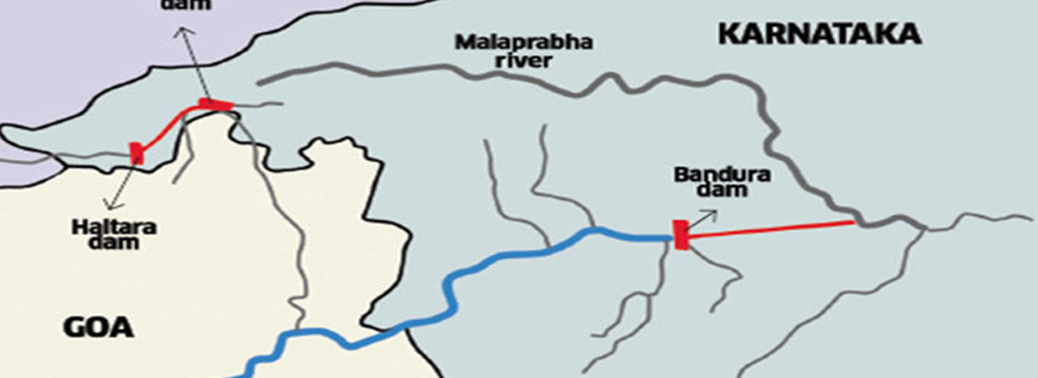
Why in news?
- The dispute over Mahadayi river has resurfaced over the past few weeks and tensions have been rife between Goa and Karnataka.
About:
- The dispute over Mahadayi river starts in the 80s and grew stronger in the subsequent decades.
- Karnataka move to design a number of dams, canals and barrages to route the Mahadayi river water to the Malaprabha basin.
- The state claimed that channeling the river water into the Malaprabha basin, a tributary of the Krishna, would meet the requirements of water-scarce districts of baalkot, Gadag, Dharwad and Belagavi.
- An inter-state water disputes tribunal has allotted 13.42 thousand million cubic feet of water (TMC) to Karnataka and 1.33 TMC to Maharashtra. Both Karnataka and Goa have contested the order and the matter is now pending in apex court.
Kalasa-Banduri Nala Project:
- The Kalasa-Banduri Nala is a project undertaken by the Government of Karnataka to improve drinking water supply to the Districts of Belagavi, Dharwad and Gadag. It involves building across Kalasa and Banduri, two tributaries of the Mahadayi river to divert 7.56 TMC of water to the Malaprabha river, which supplies the drinking water needs of the said 3 districts, i.e., Dharwad, Belagavi and Gadag. This project had been on paper for decades and the Karnataka government decided to implement it during S M Krishna’s regime.
Inter-State River Water Disputes:
- Water is in State subject as per entry 17 of State List.The entry 17 of state list deals with water and entry 56 of Union List gives power to the union Government for the regulation and development of inter-state river and river valleys.
Other active River Water Tribunals in India:
- Krishna Water Disputes Tribunal II (2004) – Karnataka, Telangana,Andra Pradesh, Maharashtra
- Mahanadi Water Disputes Tribunal (2018) – Odisha&Chhattisgarh
- Mahadayi Water Disputes Tribunal (2010)- Goa,Karnataka, Maharashtra
- Ravi& Beas Water Tribunal (1986)- Punjab, Haryana,Rajasthan
- Vansdhara Water Disputes Tribunal (2010)- Andra Pradesh & Odisha.
13TH CONFERENCE OF CENTRAL COUNCIL OF HEALTH AND FAMILY WELFARE (CCHFW)
12, Oct 2019
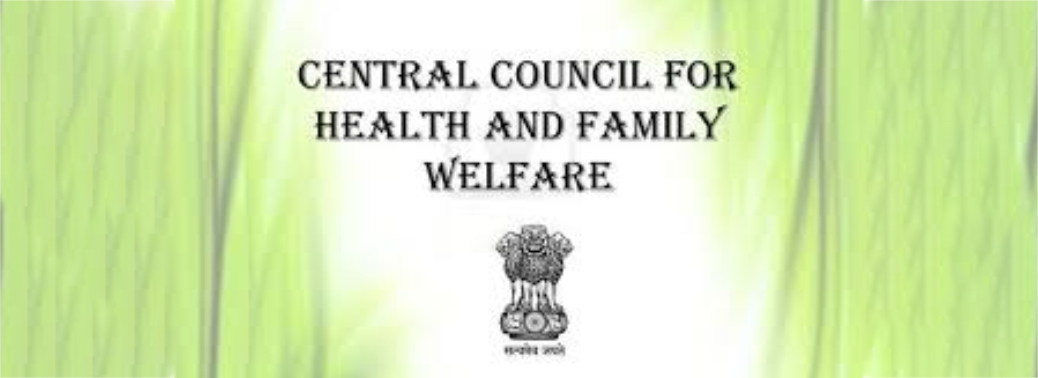
Why in News?
- The Union Health Minister Shri Harsh Vardhan inaugurated the 13th Conference of Central Council of Health and Family Welfare (CCHFW) in New Delhi.
Highlights:
- Health ministers from 13 states and UTs participated in the event.
- The minister stated that the purpose of the CCHFW meeting was to build a consensus on the national health priorities i.e. Universal Health Coverage (UHC) through Ayushman Bharat, eliminating TB and other priority agenda such as strengthening medical infrastructure.
- A member of the NITI Aayog opined that the two priority areas underscored by the Aayog are:
- Increasing the health budgets by the Centre and the States/UTs.
- Enhancing Health Infrastructure
- The minister also launched ‘Surakshit Matritva Aashwasan (SUMAN)’ for Zero Preventable Maternal and Newborn Deaths, its website and the grievance redressal portal.
- He also released the Report on National Diabetes & Diabetic Retinopathy Survey India 2015-19 and Report on National Blindness & Visual Impairment Survey India 2015-19, because 10th October is also ‘World Sight Day’.
- In addition, the minister also released guidelines on drugs, diagnostic services, biomedical equipment management and maintenance under the Pradhan Mantri National Dialysis Program.
Council of Health and Family Welfare:
- It is an apex advisory body to consider and recommend broad lines of policy in regard to matters concerning health and family welfare.
- The Union Minister for Health & Family Welfare is the Chairperson, while the Minister of State for Health & Family Welfare is the Vice-Chairperson.
- Its first meeting was held in 1988.
RBI CUT LENDING RATE BY 35 BASIS POINTS
08, Aug 2019
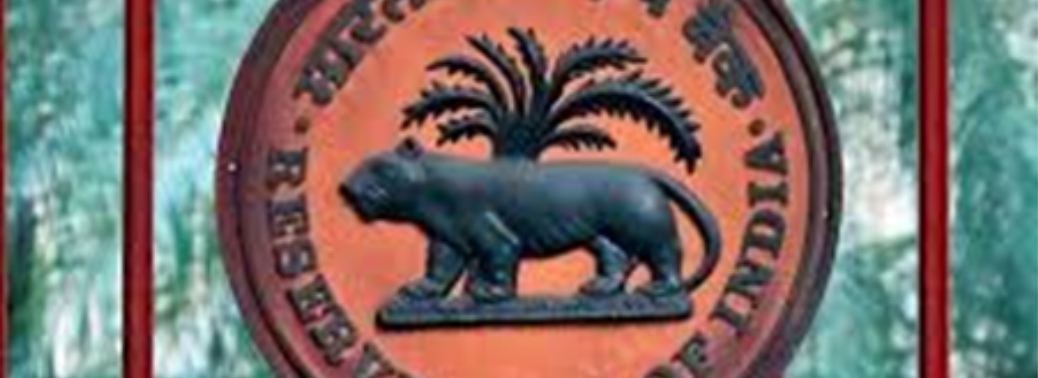
Context:
- In a bid to augur economic activity amidst slowing consumption demand, the monetary policy committee of Reserve Bank of India on Wednesday unanimously decided to go for its fourth cut this year.
Background:
- With a 35 basis point cut (highest this year) the repo rate, at which RBI lends to commercial banks, stood at a 9-year low of 5.4 per cent, since July 2010 when it was 5.25 per cent.
- The previous three cuts this year were 25 basis points each. Alongside a cut in the repo rate, the central bank also lowered its GDP growth projection from 7 per cent in June policy to 6.9 per cent now.
Why the Rate Cut?
- While inflation is a key consideration for a rate cut and it provided RBI the comfort to go for a cut, the decision was also taken to boost aggregate demand especially private investment.
- The monetary policy statement said that “inflation is currently projected to remain within the target over a 12-month ahead horizon”.
- The RBI statement further said that
- Domestic Economic activity continues to be weak,
- With the global slowdown and
- Escalating Trade Tensions posing downside risks.
- It added that while private consumption, the mainstay of aggregate demand, and investment activity remain sluggish.
Why Has Growth Been Revised Downwards GDP?
- This is the second consecutive policy statement where the RBI has lowered its GDP growth projection for 2019-20.
- While in June statement it revised it projection downward from 7.2 per cent (stated in April 2019) to 7 per cent.
- This time it further revised the growth projection further down to 6.9 per cent.
- The RBI said that “various high frequency indicators suggest weakening of both domestic and external demand conditions…business expectations Index of the Reserve Bank’s industrial outlook survey shows muted expansion in demand conditions in Q2, although a decline in input costs augurs well for growth”.
- It said that the monetary policy easing since February 2019 is expected to support economic activity, going forward.
Significance of Monetary Policy:
- It influences the interest rate in the economy — which is the cost of money when you don’t have it, and the reward for parting with it when you have it.
- In any economy, economic activity, which is measured by gross domestic product or GDP, happens by one of four ways.
- One, private individuals households spend money on consumption.
- Two, the government spends on its agenda.
- Three, private sector businesses “invest” in their productive capacity.
- And four, the net exports — which is the difference between what all of them spend on imports as against what they earn from exports.
- At the heart of any spending decision taken by any of these entities lies the question: What is the cost of money?
- Monetary policy essentially answers that question
- In every country, the central bank is mandated to decide the cost of money, which is more commonly known as the “interest rate” in the economy.
- While various factors make it difficult for a central bank to exactly dictate interest rates, as a thumb rule, RBI’s decision on the repo rate sets the markers for the rest of the economy. In other words, the EMI for your car or home is determined by what the RBI decides.
What Is the Repo Rate?
- Repo and Reverse repo are short for Repurchase agreements between the RBI and the commercial banks in the economy.
- In essence, the repo rate is the interest rate that the RBI charges a commercial bank when it borrows money from the RBI.
- As such, if the repo falls, all interest rates in the economy should fall. And that is why common people should be interested in the RBI’s monetary policy.
But the interest rate for consumer loans has not reduced by 110 bps since February. Why?
- In the real world, the “transmission” of an interest rate cut (or increase) is not a hundred per cent.
- And that is why, even though when the RBI cut by 35 bps lay consumers may only receive a much lower reduction in the interest rate on their borrowings.
- This is due to a lot of factors — but primarily, it has to do with the health of the concerned commercial bank.
Issues with Commercial Bank
- Over the past few years, almost all banks, especially the ones in the public sector, have seen their profits plummet because many of their past loans have turned out to be non-performing assets (in other words, they are not getting repaid).
- To cover for these losses, the banks have to use their existing funds, which would have otherwise gone to common consumers for fresh loans.
- Lag in monetary policy
- The reduced repo rate applies only to new borrowings of banks. The banks’ cost of existing funds is higher. Of course, funding costs would eventually come down — but this process would take time.
- This “lag” in monetary policy is a key variable in determining the efficacy of any rate cut by the RBI.
- It could take anywhere between 9 and 18 months for the full effect of an RBI decision to reflect in interest rates across the economy.
Will the rate cut bring Investments?
- Investments depend essentially on the “real” interest rate.
- The real interest rate is the difference between the repo rate and retail inflation.
- When making an investment decision, it is this interest rate that matters.
- As a variable, it allows an investor to compare the attractiveness of different economies.
- Real interest rates in India have been rising, and that is one of the biggest reasons why investments are not happening.
- The RBI’s move would reduce the real interest rate and hopefully attract more investment.
Monetary Policy Committee Composition
- Governor of the Reserve Bank of India – Chairperson, ex officio; (Shri Shaktikanta Das)
- Deputy Governor of the Reserve Bank of India, in charge of Monetary Policy- BP Kanungo (Member, ex officio).
- One officer of the Reserve Bank of India to be nominated by the Central Board – Member, ex officio; (Dr. Michael Debabrata Patra)
- Ravindra H. Dholakia, Professor, Indian Institute of Management, Ahmedabad – Member.
- Professor Pami Dua, Director, Delhi School of Economics – Member
- Shri Chetan Ghate, Professor, Indian Statistical Institute (ISI) – Member.
ABROGATION OF ARTICLE 370.
05, Aug 2019
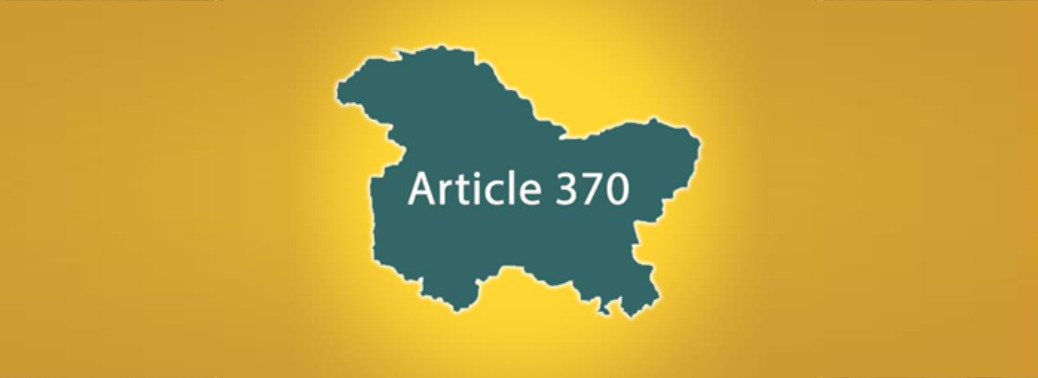
Context:
- The Centre on Monday scrapped Article 370 of the Constitution that grants special status to Jammu and Kashmir, with an order saying “it shall come into force at once”.
- The abrogation follows the Centre introducing the Jammu and Kashmir Reorganization Bill in Parliament.
What is Article 370?
- Included in the Constitution on October 17, 1949, Article 370 exempts J&K from the Indian Constitution (except Article 1 and Article 370 itself) and permits the state to draft its own Constitution.
- It restricts Parliament’s legislative powers in respect of J&K.
- For extending a central law on subjects included in the Instrument of Accession (IoA), mere “consultation” with the state government is needed.
- But for extending it to other matters, “concurrence” of the state government is mandatory.
- Background of IoA
- The IoA came into play when the Indian Independence Act, 1947 divided British India into India and Pakistan.
- For some 600 princely states whose sovereignty was restored on Independence, the Act provided for three options: to remain an independent country, join Dominion of India, or join Dominion of Pakistan — and this joining with either of the two countries was to be through an IoA.
- Though no prescribed form was provided, a state so joining could specify the terms on which it agreed to join.
- The maxim for contracts between states is pacta sunt servanda,e. promises between states must be honoured; if there is a breach of contract, the general rule is that parties are to be restored to the original position.
Constitutional Law Background:
- The political agreement of 3 June 1947 to partition the Indian sub-continent was crystallized in British statutes – the Indian Independence Act, 1947 and the modified Government of India Act, 1935.
- While India is an ancient civilization, modern-day India and Pakistan are creations of these statutes and have chosen to abide by such constitutional law governing the sub-continent.
- There is no doubt about the legitimacy of an ‘India’ and a ‘Pakistan’ as created by these statutes, and both countries have been recognized by the UN as sovereign member states.
- Kashmir Status:
- The princely state of J&K was a sovereign state as of 15 August 1947 as per this constitutional law creating India and Pakistan.
- It was in terms of such law that the Ruler of J&K, who was the sole repository of power in the state, chose to accede to India through the accession instrument of 26 October 1947.
- Such accession by the Ruler, though unconditional, was only in matters of external affairs, communications and defence and certain ancillary matters.
- The accession instrument expressly declared that nothing therein would affect the continuance of the sovereignty of the Ruler in or over J&K.
- Exception in Kashmir:
- Unlike other princely states acceding to India, the sovereign Ruler of J&K did not thereafter merge the territory of the state into the Indian Union nor cede further subjects to India.
Arrangement between India and Kashmir:
- Even so, it was not contemplated that a ruler would remain the constitutional head of a state within a democratic Indian republic.
- Hence, there was to be a transfer of power from the Ruler of J&K to a duly elected state constituent assembly.
- And so, the Indian Constitution itself contemplated in Article 370 that J&K would have its own constitution framed by its own constituent assembly.
- Since there was still to be a transition from monarchy to a form of government that was to be decided by a state constituent assembly that was yet to be set up, and which would also finally determine the constitutional relationship of J&K with the Indian Union, Article 370 was described as a temporary provision and placed under Part XXI of the Indian Constitution which deals with “Temporary, Transitional and Special Provisions”.
- Accordingly, the Indian Constitution was made applicable to J&K only through Article 370, and it was through Article 370 that Article 1 of the Constitution (which lists the States of India and their territories) was extended to J&K.
Kashmir status in Indian Union:
- The state Constituent Assembly, subsequently set up in 1951, regarded the constitutional relationship of J&K with India as one of an autonomous republic within the Indian Union.
Delhi Agreement, 1952:
- This relationship was later crystallized in the Delhi Agreement, 1952, which was duly ratified by the Indian Parliament and the state Constituent Assembly, and which inter alia permitted the state legislature to make laws conferring special rights and privileges upon the state subjects.
- The President of India, with the concurrence of J&K, exercised the power under Article 370 to issue the Constitution (Application to Jammu & Kashmir) Order, 1954, which inserted provisions like Article 35A to give effect to the Delhi Agreement and also applied further Articles of the Indian Constitution to J&K (with modifications).
Article 3 of constitution of India and Kashmir status:
- Another provision inserted by this 1954 Order was the proviso to Article 3 of the Indian Constitution.
- This provision mandates that “no Bill providing for increasing or diminishing the area of the State of Jammu and Kashmir or altering the name or boundary of that State shall be introduced in Parliament without the consent of the Legislature of that State.”
- In other words, J&K has not only Not merged its territory into the Indian Union, it has explicitly preserved its territorial integrity as also identity. That, incidentally, also rules out trifurcation of J&K without its consent.
Can Article 370 can be Abrogated?
- Article 370 itself mandates a recommendation of the state Constituent Assembly before the President of India can declare Article 370 inoperative.
- The state Constituent Assembly dispersed after framing the Constitution of Jammu & Kashmir in 1957, without, however, making any such recommendation.
- Nor can a recommendation of the state legislature (unlikely as it may be) be a substitute for the requisite recommendation of the state Constituent Assembly.
- It therefore follows that the competence of any organ of the Indian State to declare Article 370 inoperative no longer exists.
What is assumption for abrogation of Article 370:
- Article 370 as an obstacle to full integration of J&K into India plead that the abrogation of Article 370 (and Article 35A) would remove the preferential treatment accorded to the state, permit citizens from across the country to settle in J&K and buy land there, and assimilate the people of J&K into the mainstream.
- Arguments in Oppose
- Honouring the autonomy guaranteed by Article 370, asserting that it is Article 370 that makes J&K a part of India, and should Article 370 be abrogated, the accession of J&K to India itself gets undone.
- The contention is that Article 1 of the Indian Constitution (which lists the States of India) is made applicable to J&K by Article 370 itself, and if Article 370 goes, so does the application of Article 1 of the Indian Constitution to J&K, which would render J&K independent of India.
Experts opinion:
- J&K became an integral part of India not by virtue of Article 370 of the Indian Constitution but through the accession instrument of 26 October 1947 executed by its sovereign Ruler in favour of India in terms of the law that created modern-day India.
- The 11-Judge Bench of the Supreme Court held in Madhav Rao (1973) that the accession instrument was an Act of State on the part of the sovereign ruler of a princely state and bound all concerned.
- The accession made by a sovereign J&K to a sovereign India, therefore, cannot be re-opened and is binding on all, whether in Srinagar or in New Delhi.
- Since the basis of the relationship between J&K and the Indian Union is the accession instrument, and not Article 370, the abrogation of Article 370 (even if it was constitutionally permissible) would not undo the accession or make J&K independent of India.
- Consequences from such abrogation
- Far from assimilation, such abrogation would revert the relationship between J&K and India to the terms of the accession instrument and confine New Delhi’s jurisdiction to only matters of external affairs, communications and defence and ancillary matters, with the rest of the matters falling within the jurisdiction of the current constitutional polity of J&K.
- After all, should Article 370 go, so would all the Presidential Orders under Article 370, most of which had the effect of extending New Delhi’s fiat to the state, often to an extent that would be impermissible for other parts of the country.
- The obvious constitutional consequence of abrogating Article 370 would be to enhance the state’s autonomy, which would hardly have been New Delhi’s intention. Indeed, it would be a classic case of New Delhi cutting off its nose to spite its face.
NATIONAL RURAL BANK OF INDIA.
17, Jul 2019
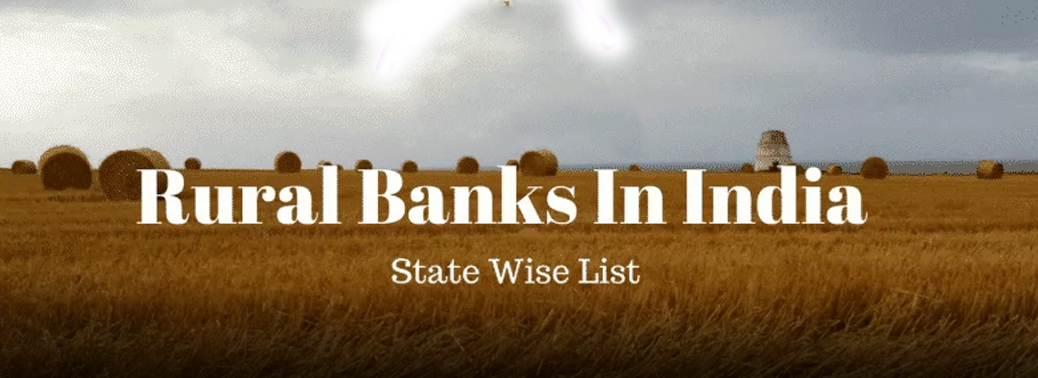
- Context- Govt is thinking of formation of National Rural Bank of India in order to consolidate in Regional rural Banks (RRB).
Parliamentary Standing Committee on Finance (2003)
- The Parliamentary Standing Committee on Finance (2003) in its 55th Report recommended that Government may consider the setting up of an apex body viz. National Rural Bank of India.
Why there is need of formation of National Rural Bank of India.
- National Rural Bank of India can act as apex body to monitor the Regional Rural Banks (RRBs)
Steps taken by the Government to strengthen the RRBs:
- Government had initiated the process of structural consolidation of RRBs in 2004-05 by amalgamating RRBs of the same Sponsor Bank within a State.
- Recapitalization support is provided to RRBs to augment their capital so as to comply with regulatory capital requirements.
- Periodic review of financial performance of RRBs,
- Regular Capacity building efforts are undertaken by NABARD like training at Bankers Institute of Rural Development (BIRD), conduct of Organizational Development Initiative (ODI), exposure visits, etc.
- NABARD provides regular policy support to RRBs in matters relating to human resources and an arrangement has been made for redressal of grievances through Joint Consultative Committee (JCC).
What is Regional Rural Banks (RRBs)
- Regional Rural Banks (RRBs) are financial institutions which ensure adequate credit for agriculture and other rural sectors .
- Regional Rural Banks were set up on the basis of the recommendations of the Narasimham Working Group (1975), and after the legislations of the Regional Rural Banks Act, 1976.
- The first Regional Rural Bank “Prathama Grameen Bank” was set up on October 2, 1975.At present there are 82 RRBs in India.
Equity in RRBs
- The equity of a regional rural bank is held by the Central Government, concerned State Government and the Sponsor Bank in the proportion of 50:15:35.
Significance:
- The RRBs combine the characteristics of a cooperative in terms of the familiarity of the rural problems and a commercial bank in terms of its professionalism and ability to mobilise financial resources.
- The main objectives of RRB’s are to provide credit and other facilities‚ especially to the small and marginal farmers‚ agricultural labourers artisans and small entrepreneurs in rural areas with the objective of bridging the credit gap in rural areas, checking the outflow of rural deposits to urban areas and reduce regional imbalances and increase rural employment generation.
LAW COMMISSION
15, Jul 2019
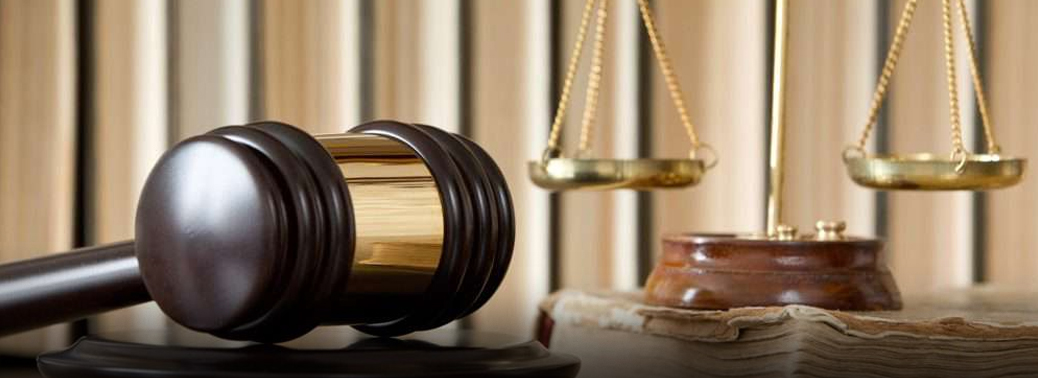
- Context- Law Ministry has initiated the process of setting up the body which gives advice to the government on complex legal issues.
What is Law Commission:
- Law Commission of India is neither a constitutional body nor a statutory body.
- It is truly an ad hoc and advisory body whose work is to do research and make recommendations for law reforms such as amendments and updations of prevalent and inherited laws.
- Recommendations is NOT binding upon the Government.
How Law Commission is established?
- Law Commission of is established by an order of central government.
Who will head the law commission is completely at the discretion of the Government. However, it is a convention that a retired judge of Supreme Court heads India’s Law Commission. - Further, the States also can constitute their own law commissions.
Who is composition of Law Commission?
- The Commission is headed by a full-time Chairperson. It membership primarily comprises legal experts, who are entrusted a mandate by the Government.
- Law commission would be comprised of:
- A full-time Chairperson
- Four Full-Time Members (including a Member-Secretary). Secretary, Department of Legal Affairs as ex offcio Member. Secretary, Legislative Department as ex offcio Member. not more than five part-time Members.
- The Commission is established for a fixed tenure (generally three years) and works as an advisory body to the Ministry of Law and Justice.
History of Law Commission:
- India’s first Law Commission was established in 1834 via Charter Act of 1833 under the Chairmanship of Lord Macaulay.
- This law commission had recommended codification of the Penal Code, the Criminal Procedure Code and a few other matters.
ELECTORAL REFORMS
12, Jul 2019
- Context-Discussion in the Rajya Sabha on electoral reforms
Major Reforms Areas:
- Appointment system for Election Commissioners and Chief Election Commissioner (CEC);
- Money power; Electronic Voting Machines (EVMs);
- The idea of simultaneous elections;
- Role social media
- The use of government data and surrogate advertisements to target certain sections of voters.
Appointment System for Election Commissioners and Chief Election Commissioner (CEC)
Present System of Appointment
- The appointment of the Chief Election Commissioner and other Election Commissioners shall, subject to the provisions of any law made in that behalf by Parliament be made by the President.
- The President appoints the Election Commissioner based on the recommendations of the cabinet under the Transaction of Business Rules of 1961.
B R Ambedkar on Appointment of EC:
- The tenure can’t be made a fixed and secure tenure if there is no provision in the Constitution to prevent a fool or a naive or a person who is likely to be under the thumb of the executive.
Collegium System:
- Communist Party of India (CPI); the Communist Party of IndiaMarxist (CPIM); the Dravida Munnetra Kazhagam (DMK) and the Bahujan Samaj Party (BSP), all of whom demanded the introduction of a collegium system
Money Power:
Various Documents and Report on money power in election
- 1962 private member’s Bill by Atal Bihari Vajpayee;
- The Goswami committee report on electoral reforms (1990);
- The Indrajit Gupta committee report on state funding of elections (1998).
- Independent think tank report on poll expenditure released in June, discussed at length the regressive impact of amending the Foreign Contribution (Regulation) Act (FCRA) and removing the 7.5% cap on corporate donations.
State Funded Election
- Proposal for state funding (of political parties) based on either a National Electoral Fund or the number of votes obtained by the respective parties.
- Crowdfunding in the form of small donations. Current expenditure cap on candidates is unrealistic and should either be raised or removed to encourage transparency.
Simultaneous Elections:
In favour:
- There is electoral fatigue, more expenditure and governance Issue in separate elections.
- Simultaneous elections will give stability to governments.
Ambedkar on Election (Accountability tool) and stability
- Accountability should hold precedence over stability.
Proportional representation system
-
- Proportional representation system was put forth by the DMK, the CPI and the CPI (M).
- Explanation why proportional Representation.
- BSP’s performance in 2014 Lok Sabha elections, when the party got a vote share of nearly 20% in Uttar Pradesh but zero seats.
- No representation for 20% of population.
- A number of MPs argued for a mixed system, where there was a provision for both First Past the Post and Proportional Representation systems.
Reforms that can be done
- Reducing the number of phases in elections by raising more security forces;
- Depoliticisation of constitutional appointments by appointing Commissioners through a broad-based collegium;
- State funding of political parties by means of a National Electoral Fund or on the basis of the number of votes obtained;
- Capping the expenditure of political parties;
- Giving the Election Commission of India (ECI) powers to deregister recalcitrant political parties;
- Inclusion of proportional representation system; and
- Revisiting the Information Technology Act, to strengthen social media regulations.
EIGHTH SCHEDULE OF THE INDIAN CONSTITUTION
02, Jul 2019
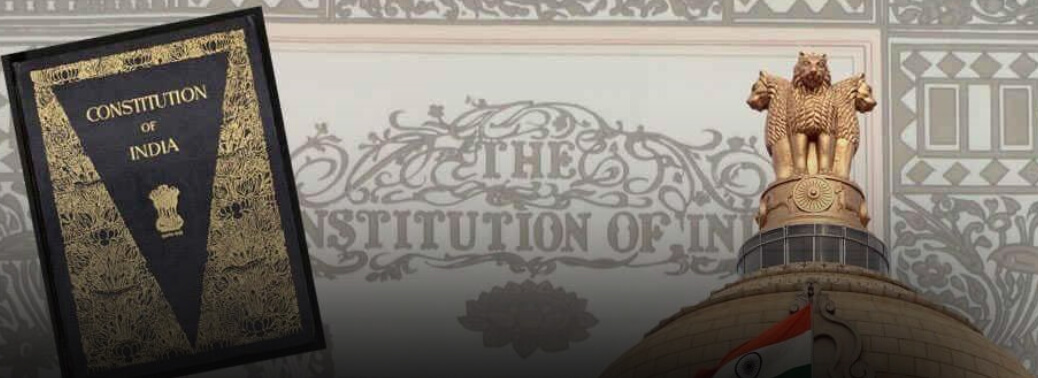
- Context: Recently a Member of Parliament made a case in Lok Sabha for inclusion of Bhojpuri language in the 8th Schedule of the Constitution
About 8th Schedule:
- It is the list of official languages recognised by the Constitution.
- The Eighth Schedule to the Indian Constitution contains a list of 22 scheduled languages viz. Assamese, Bengali, Gujarati, Hindi, Kannada, Kashmiri, Malayalam, Marathi, Odia, Punjabi, Sanskrit, Tamil, Telugu, Urdu, Sindhi (added by 21st Amendment Act, 1967), Konkani, Manipuri, Nepali (added by 71st Amendment Act, 1992), Bodo, Dogri, Maithili, Santhal (added by 92nd Amendment 2003).
- The list had originally 14 languages only but subsequently through amendments 8 new languages were added.
FINANCIAL STABILITY REPORT
28, Jun 2019
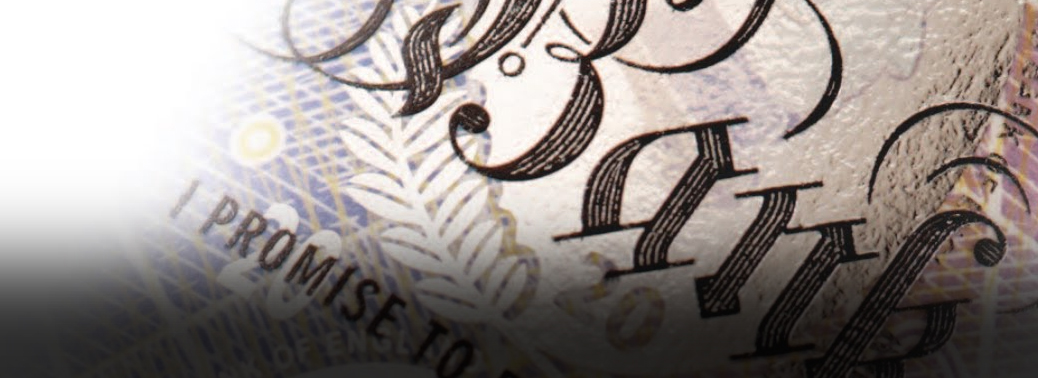
What is it About?
- The FSR reflects the collective assessment of the Sub-Committee of the Financial Stability and Development Council (FSDC) on risks to financial stability, as also the resilience of the financial system.
- Gross non-performing assets in the banking system have declined for the second consecutive half year, while the credit growth is picking up.
- Gross NPA ratio declined to 9.3% as on March 2019. It was 10.8% in September 2018 and 11.5% in March 2018.
- Gross NPAs could further decline to 9% by March 2020, the macro stress tests indicated.
What is Non-Performing Asset (NPA)?
- A nonperforming asset (NPA) refers to a classification for loans or advances that are in default or are in arrears on scheduled payments of principal or interest.
- In most cases, debt is classified as nonperforming when loan payments have not been made for a period of 90 days.
- While 90 days of non-payment is the standard, the amount of elapsed time may be shorter or longer depending on the terms and conditions of each loan.
- Following the capital infusion by the government in public sector banks, the overall capital adequacy ratio of the commercial banks improved from 13.7% in September 2018 to 14.3% in March 2019, with state-run banks’ CAR improving from 11.3% to 12.2% during the period. However, there was a marginal decline in the CAR of private sector banks.
- Credit growth of Public sector banks were at 9.6% while private lenders continue to robust growth of 21%.
What is Capital Adequacy Ratio – CAR?
- The capital adequacy ratio (CAR) is a measurement of a Bank’s available capital expressed as a percentage of a bank’s risk-weighted credit exposures.
- The capital adequacy ratio, also known as capital-to-risk weighted assets ratio (CRAR), is used to protect depositors and promote the stability and efficiency of financial systems around the world.
- The reason minimum capital adequacy ratios (CARs) are critical is to make sure that banks have enough cushion to absorb a reasonable amount of losses before they become insolvent and consequently lose depositors’ funds.
RBI DIRECT TO SAVE THE PAYMENTS DATA WITHIN INDIA.
27, Jun 2019
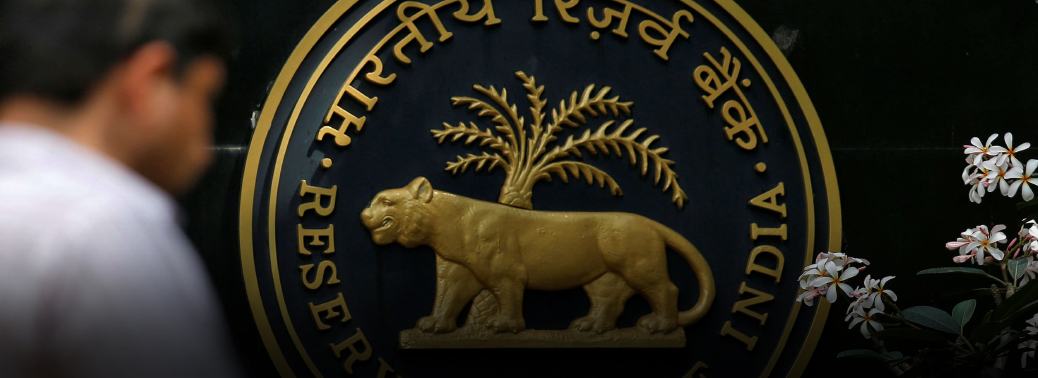
- The Reserve Bank of India (RBI) has clarified that payment system providers need to store entire payments data in a system only in India.
- The issue has come to the forefront because a global push for data free flow across national boundaries. Japanese Prime Minister Shinzo Abe has been a torch bearer for such a system.
- The risk of data going abroad is that it may fall into the hands of misuse that could lead to manipulations in the life of common man in India. Moreover, India being the second largest populated countries in the world, such data could lead to manipulations by big corporates.
- The data should include end-to-end transaction details and information pertaining to payment or settlement transaction that is gathered/transmitted/processed as part of a payment message/instruction.
- The data could be pertaining to customer data like name, mobile number, Aadhaar number, PAN; Payment-sensitive data like customer and beneficiary account details; payment credentials like OTP, PIN and, transaction data such as originating and destination system information amount, among others.
- The processing is done abroad, the data should be deleted from the systems abroad and brought back to India within one business day or 24 hours from the payment processing, whichever is earlier.
CENTRE EXPANDS TERMS OF REFERENCE OF DIRECT TAX LAW
27, Jun 2019
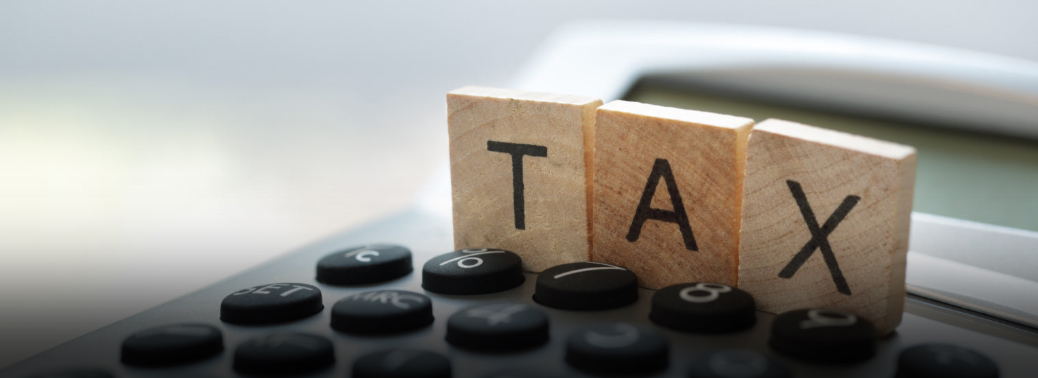
- The Central Board of Direct Taxes has expanded the terms of reference of the task force set up to come up with a new direct tax law.
- They include appropriate direct tax legislation keeping in view the direct tax litigation in other countries, international best standards, the economic needs of the country and other related issues.
- The new additions include the creation of a faceless and anonymized verification and security system, and the sharing of information between GST, customs and CBDT, and the Financial intelligence unit.
RBI BEGINS MONITORING HFCs
27, Jun 2019
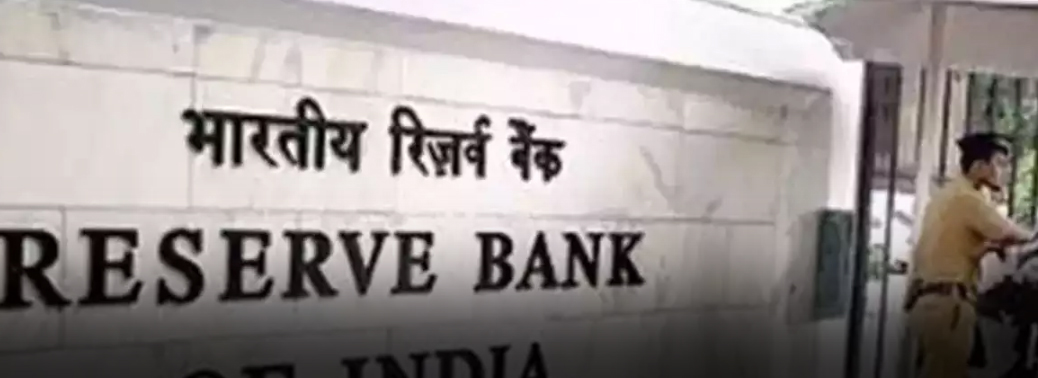
- The Reserve Bank of India (RBI) has started monitoring the liquidity position, asset-liability gap and repayment schedules of Housing
Finance Companies (HFCs) on a daily basis after the liquidity crisis hit these firms, resulting in defaults. - Mortgage lenders are regulated by the National Housing Bank.
What is a Mortgage?
- A Mortgage is a loan in which property or real estate is used as Collateral.
- The borrower enters into an agreement with the lender (usually a bank) wherein the borrower receives cash upfront then makes payments over a set time span until he pays back the lender in full.
- A mortgage is often referred to as home loan when it is used for the purchase of a home.
- The central bank is of the view that the since the liquidity crisis of the HFCs could have a spill over effect on the other segments in the financial sector, including banks, and hence, could affect financial stability, it was necessary to monitor these entities on a regular basis.
- The non-banking financial sector, particularly the mortgage lenders, are fighting a crisis of confidence with banks having stopped lending to these entities since the debt default by IL&FS in September last year.
- NBFCs saw their cost of funds going up sharply in the last few months. This has impacted their business growth as the lenders have to cut down on their loan disbursements.
CENTRAL BOARD OF FILM CERTIFICATION (CBFC)
26, Jun 2019
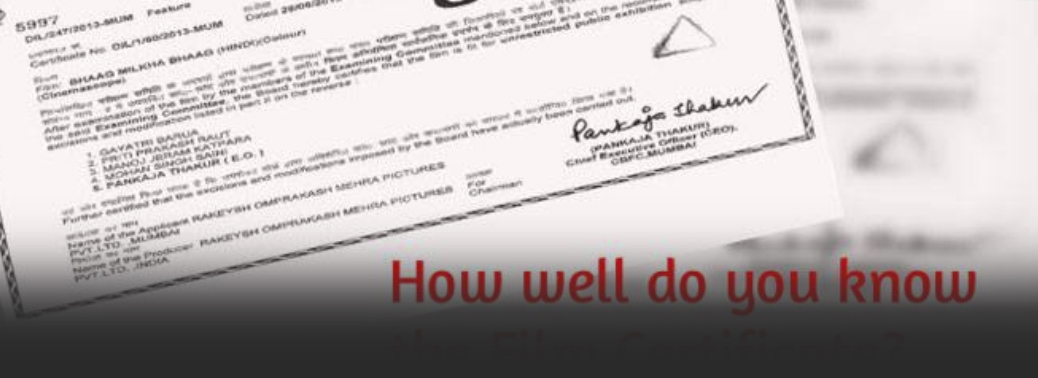
- It is a Statutory Body under Union Ministry of Information and Broadcasting.
- It grants certificate to regulate the public exhibition of films in India under the provisions of the Cinematograph Act 1952.
- Films can be publicly exhibited in India only after they have been certified by the Central Board of Film Certification.
- The Certification process is in accordance with The Cinematograph Act, 1952, The Cinematograph (certification) Rules, 1983, and the guidelines issued by the Central government u/s 5 (B).
RESERVE BANK OF INDIA (RBI)
25, Jun 2019
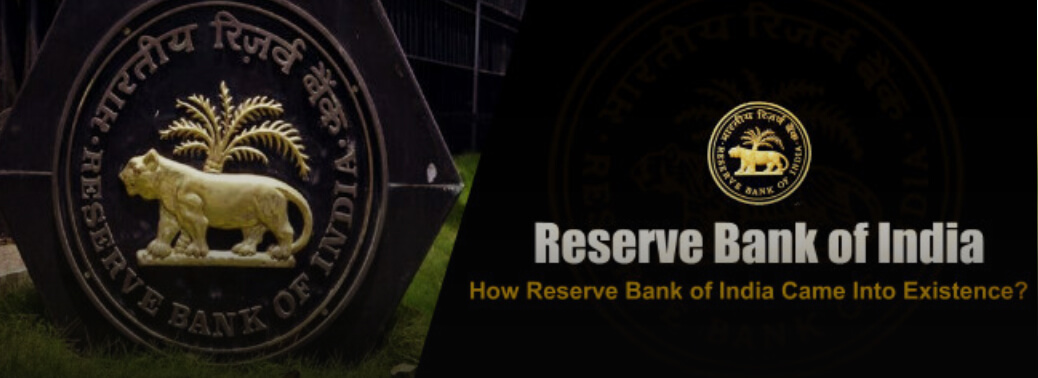
Context
- Viral Acharya’s resignation as Deputy Governor of the Reserve Bank of India
About:
- The Reserve Bank of India was established on April 1, 1935 in accordance with the provisions of the Reserve Bank of India Act, 1934.
- Though originally privately owned, since nationalisation in 1949, the Reserve Bank is fully owned by the Government of India.
Composition:
Central Board
- The Reserve Bank’s affairs are governed by a central board of directors. The board is appointed by the Government of India in keeping with the Reserve Bank of India Act.
- Appointed/nominated for a period of four years
Constitution:
Official Directors
- Full-Time: Governor and not more than four Deputy Governors
Non-Official Directors
- Nominated by Government: ten Directors from various fields and two government Official
- Others: four Directors – one each from four local boards
Functions:
Monetary Authority:
- Formulates, implements and monitors the monetary policy.
- Objective: maintaining price stability while keeping in mind the objective of growth.
Regulator and supervisor of the financial system:
- Prescribes broad parameters of banking operations within which the country’s banking and financial system functions.
- Objective: maintain public confidence in the system, protect depositors’ interest and provide cost-effective banking services to the public.
Manager of Foreign Exchange
- Manages the Foreign Exchange Management Act, 1999.
- Objective: To facilitate external trade and payment and promote orderly development and maintenance of foreign exchange market in India.
Issuer of currency:
- Issues and exchanges or destroys currency and coins not fit for circulation.
- Objective: to give the public adequate quantity of supplies of currency notes and coins and in good quality.
Developmental Role:
- Performs a wide range of promotional functions to support national objectives.
Regulator and Supervisor of Payment and Settlement Systems:
- Introduces and upgrades safe and efficient modes of payment systems in the country to meet the requirements of the public at large.
- Objective: maintain public confidence in payment and settlement system.
Related Functions
- Banker to the Government: performs merchant banking function for the central and the state governments; also acts as their banker.
- Banker to Banks: maintains banking accounts of all scheduled banks.
NITI AAYOG
24, Jun 2019
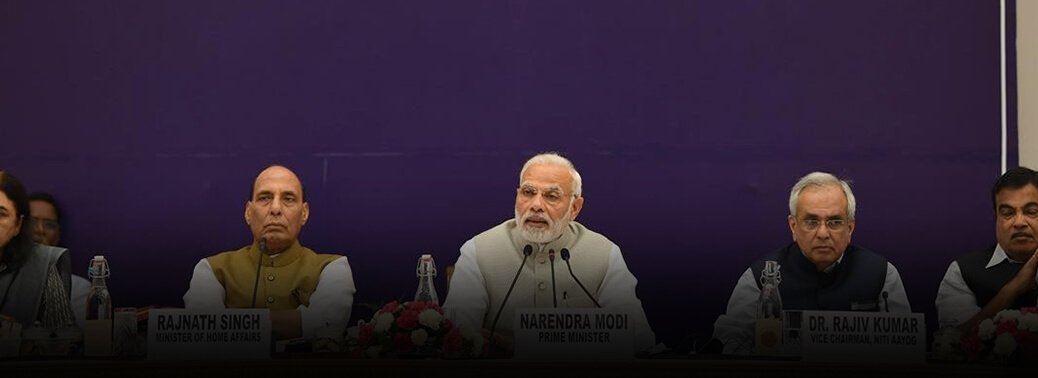
Issue in economy now that can be handled by NITI Aayog:
- There is horizontal and vertical imbalance revenues of centre and states. Vertical Imbalance mainly allocates more money to Centre.
- Horizonal imbalance involves two types of imbalances.
- Type I is to do with the adequate provision of basic public goods and services, while the second,
- Type II, is due to growth accelerating infrastructure or the transformational capital deficits.
- We need another institution to tackle the horizontal imbalance of the Type II; for this the NITI Aayog is the most appropriate institution.
- NITI Aayog should be engaged with the allocation of “transformational” capital in a formulaic manner, complete with incentive• compatible conditionalities.
- NITI Aayog should also mandated to create an independent evaluation office which will monitor and evaluate the efficacy of utilisation of grants.
Features of NITI Aayog:
- Not Constitutional Body nor statutory body
- NITI Aayog is essentially an advisory body that seeks to provide critical directional and strategic inputs across spectrum of key elements of policy to the centre as well as states.
- It also seeks to put an end to the slow and tardy implementation of the policy by fostering inter-ministry, inter-state and centre-state coordination.
- It has been envisaged to follow the bottom-top development approach.
Composition of NITI Aayog:
- Chairperson -Prime Minister Governing Council –
- Its members are Chief Ministers and Administrators of the Union Territories Regional Councils. These would be created as per need and its members would be chief ministers and administrators of UTs of respective regions. Vice-Chairperson.
- The Vice-chairperson of the NITI Aayog will be appointed by Prime Minister.
National Company Law Tribunal
19, Jun 2019
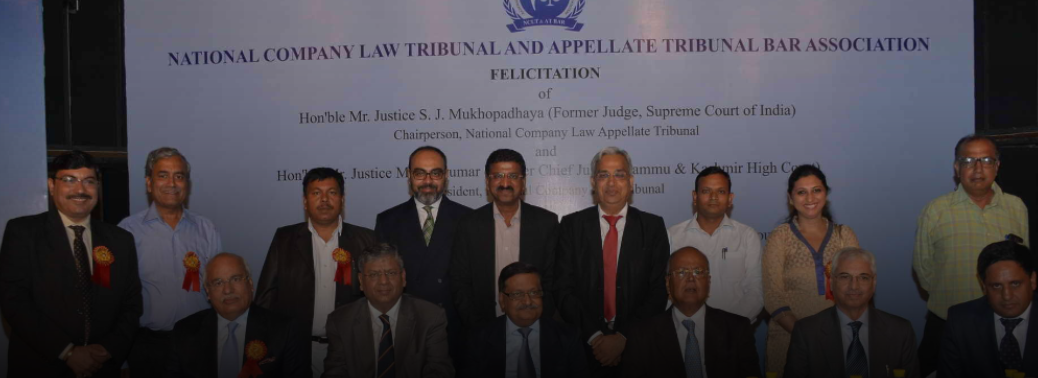
- The statutory body has constituted National Company Law Tribunal (NCLT) under section 408 of the Companies Act, 2013
- It is a quasi-judicial body in nature.
Significance:
- Insolvency and Bankruptcy Code, 2016 (Bankruptcy Code), also provides wide powers to the NCLT to adjudicate upon the ‘insolvency resolution process’ and liquidation of corporate debtors.
- NCLAT is also the Appellate Tribunal to hear and dispose of appeals against any direction issued or decision made or order passed by the Competition Commission of India.
OBC CATEGORIES COMMISSION RECEIVES 2-MONTH EXTENSION
23, May 2019
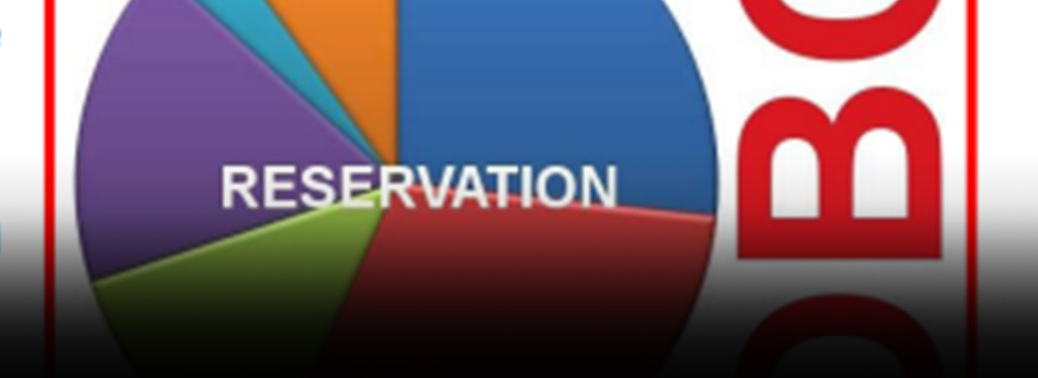
Why in News:
- A commission appointed in 2017 to examine the sub-categorisation of the Other Backward Classes (OBC) has been given a two-month extension by President Ram Nath Kovind
Details:
- The commission had been constituted to “examine the extent of inequitable distribution of benefits of reservation among the castes or communities included in the broad category of Other Backward Classes with reference to such classes included in the Central List.
- The commission was meant to “work out the mechanism, criteria, norms and parameters in a scientific approach for sub-categorisation within such OBCs and to take up the exercise of identifying the respective castes or communities or sub-castes or synonyms in the Central List of OBCs and classifying them into their respective sub-categories”
- The commission, was supposed to present its report to the President in 12 weeks from the time the chairperson assumed charge.
Since considerable time was taken up in obtaining the data and thereafter in analysing of the data, the tenure of the Commission has been extended.
National Commission for Backward Classes
- National Commission for Backward Classes is a Constitutional body set up through the 123rd constitutional amendment bill 2018 and 102nd amendment act under the provisions of Article 338B of Indian Constitution.
- The commission consists of one chairman and five Members with the term of three years. The National Commission for Backward Classes is vested with the responsibility of considering inclusions in and exclusions from lists of communities notified as backward for the purpose of job reservations.
- The commission tenders the needful advice to the Central Government on the issues related to the backward classes and the commission has the powers of a civil court
- The NCBC was given limited powers – only to recommend to the government inclusion or exclusion of a community in the central list of OBCs.
- The power to hear complaints of the OBCs and protect their interests remained with the National Commission for Scheduled Castes
REDACTIVE PRICING AUDIT AND THE CAG’S DUTIES
14, May 2019

Why in News:
- Parliament is constitutionally privileged to know under what conditions a procurement of Rafale fighter aircraft was decided on.
Details:
- The Supreme Court’s observations in connection with the Rafale fighter aircraft deal by citing the Comptroller and Auditor General of India’s (CAG’s) report on redacted pricing,
and subsequent media reports and the controversy over “stolen files” brought back into the
spotlight the role of the supreme audit institution of India.
Redaction:
- Redaction is the selection or adaption by ‘obscuring or removing sensitive information’ from
a document prior to publication.
CAG Audit:
- The CAG is mandated to audit all receipts and expenditures of the three-tier governments in India and report to the legislature judiciously, independently, objectively in compliance with applicable laws, rules and regulations, without fear and favour. Legislative committees such as the Public Accounts Committee and Committee on Public Undertakings examine the CAG’s selected reports.
Not Transparent:
- In the preface of the audit report, the CAG stated that redactive pricing was unprecedented but had to be accepted due to the Ministry’s insistence citing security concerns. It was unprecedented that an audit report submitted by the CAG to the President under Article 151 of the Constitution suppressed relevant information. Redactive pricing is nowhere used in SAI audit reports. It does not seem to have been used in a government audit by any SAI of any country. Redactive pricing in the ‘Performance Audit Report of the Comptroller and Auditor General of India on Capital Acquisition in Indian Air Force (Union Government – Defence Services, Air Force, Report No. 3 of 2019)’ suppresses more than it reveals. An audit is expected to analyse the facts and comparative pricing charts to highlight the financial propriety and prudence of the procurement decision.
Complex Audit:
- A performance audit is done to establish whether the procurement activity was executed keeping in mind economy, efficiency, effectiveness, ethics and equity. Only a thorough pricing audit can bring out the credibility and integrity of a purchase decision, thereby achieving an SAI’s constitutionally mandated responsibilities.
Comptroller and Auditor General of India:
- CAG is an independent authority under the Constitution of India. He is the head of the Indian audit & account department and chief Guardian of Public purse. It is the institution through which the accountability of the government and other public authorities (all those who spend public funds) to Parliament and State Legislatures and through them to the people is ensured. CAG derives its audit mandate from different sources like– Constitution (Articles 148 to 151). The Comptroller and Auditor General’s (Duties, Powers and Conditions of Service) Act, 1971
- Important Judgments
- Instructions of Government of India.
- Regulations on Audit & Accounts-2007
CENTRE DENIES RTI PLEA ON CIC APPOINTMENTS
10, Apr 2019

Why in News?
- The Centre has denied a Right to Information (RTI) request for details of the ongoing recruitment process for four vacancies in the Central Information Commission.
Background:
- On February, 2019, the SC had directed the Centre and States to pro-actively disclose all information regarding the recruitment advertisement, the particulars of the applicants, the search and selection committees and the criteria for short-listing candidates on their websites.
Appointment of CIC:
- Section 12(3) of the RTI Act 2005 provides as follows.
- The Chief Information Commissioner and Information Commissioners shall be appointed by the President on the recommendation of a committee consisting of The Prime Minister, who shall be the Chairperson of the committee. The Leader of Opposition in the Lok Sabha.
- A Union Cabinet Minister to be nominated by the Prime Minister.
- There cannot be more that 10 information commissioners all of whose appointments are made by the President and it includes one Chief Information Commissioner (CIC).
Term of office:
- Section 13 of the RTI Act 2005 provides that the Chief Information Commissioner shall hold office for a term of five years from the date on
- which he enters upon his office and shall not be eligible for reappointment.
- Section 13(5)(a) of the RTI Act 2005 provides that the salaries and allowances payable to and other terms and conditions of service of the Chief
- Information Commissioner shall be the same as that of the Chief Election Commissioner.
Search Committee on Lok pal
03, Sep 2018
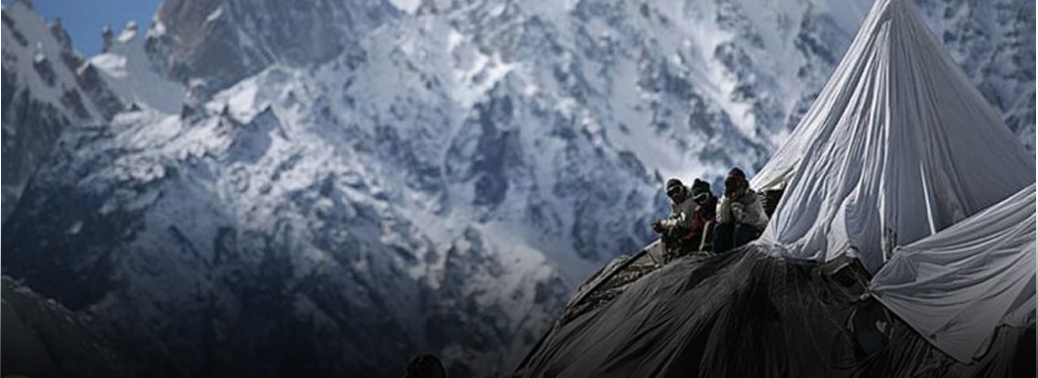
- The Centre on Thursday constituted an eight-member search committee to be headed by former Supreme Court judge, Justice Ranjana Prakash Desai, to recommend the chairperson and members of the anti-corruption ombudsman Lokpal.
About
- The search committee was appointed by the selection committee which comprises Prime Minister Narendra Modi, Chief Justice of India Dipak Misra, Lok Sabha Speaker Sumitra Mahajan, leader of the largest opposition party, which in this case was Congress’s Mallikarjun Kharge, and eminent jurist Mukul Rohatgi.
- The search committee consists of former State Bank of India chief Arundhati Bhattacharya, Prasar Bharati chairperson A. Surya Prakash and former Indian Space Research Organisation head A.S. Kiran Kumar.
- The step comes after the Supreme Court’s order to appoint Lokpal at the earliest. The search committee is a major step towards setting up of the Lok pal.
- The decision to constitute the search committee comes four years after the Lokpal and Lokayuktas Act, which envisages establishment of anti-graft body Lokpal at the Centre and Lokayuktas in states to look into cases of corruption against certain categories of public servants, was passed in 2013.
- As per the Lokpal and Lokayukta Act, only the leader of the opposition (LoP) in the Lok Sabha is a member of the selection committee and since, Kharge does not have that status, he is not a part of the panel. A party should have at least 55 seats or 10 per cent of the strength of the Lok Sabha for its leader to get the LoP status.
- The Lokpal selection committee headed by the prime minister has as its members the Lok Sabha speaker, leader of the opposition in the lower house, the chief justice of India or a judge of the apex court nominated by him, and an eminent jurist who could be nominated by the president or any other member.
Background:
- The Lokpal will consist of a chairperson and four judicial and four non-judicial members.
- According to the Lokpal Act, the chairperson and members shall be appointed by the President on the basis of recommendations of the selection committee comprising the Prime Minister, the Speaker of the Lok Sabha, the Leader of Opposition in the House, the Chief Justice of India and an eminent jurist.
- For selecting the chairperson and the members, the selection committee shall constitute a search panel of at least eight persons.
- Under the Lokpal Act of 2013, the DoPT is supposed to put together a list of candidates interested to be chairperson or members of the Lokpal .
- This list would then go to the proposed eight-member search committee, which would shortlist names and place them before the selection panel headed by the Prime Minister. The selection panel may or may not pick names suggested by the search committee.
Future in Gold, Silver
02, Sep 2018

- BSE Ltd. has received the Securities and Exchange Board of India’s (Sebi) approval to launch delivery-based futures contract in gold for 1 kg and silver for 30 kg.
About:
- Trading of these contracts will be launched on 1 October, and contract start day will be sixth day of contract launch month and last trading day will be fifth day of contract expiry month.
- The commodity trading session will be from Monday to Friday 10.00am to 11.30/11:55pm. Delivery centre of gold and silver futures contract will be exchange-designated vaults at Ahmedabad initially and then expanding it pan India in the second phase.
Futures:
- The futures markets are really designed to be a hedging vehicle for those looking to try and mitigate price risk.
- Futures contracts were first traded in the mid-19th century with the establishment of a central grain market. This central grain market gave farmers the ability to sell their grain for immediate delivery in what is known as the spot market, or they had the option to sell their grain for a certain price for a future delivery date.
- A futures contract is a legal agreement between the buyer and the seller for the purchase or sale of an asset on a specific date during a specific month.
- The price of a futures contract is not fixed, however, and is constantly in a state of discovery through an auction-like process on exchange trading floors and/or electronic trading platforms. In the case of gold or silver, a futures contract outlines a specific delivery time and place for “good delivery” gold or silver bullion.
- The use of futures contracts generally falls into two broad categories: hedging and speculative purposes.
- A hedger uses futures contracts to try and mitigate their price risk in an asset, while a speculator accepts this price risk in order to try and profit from favourable movement in prices. The market needs participation from both hedgers and speculators to function properly.
- By doing this seller has insulated himself from a large drop in the price of, that could adversely affect his potential income.
Mediation Cell Under NCPCR
08, Jul 2018
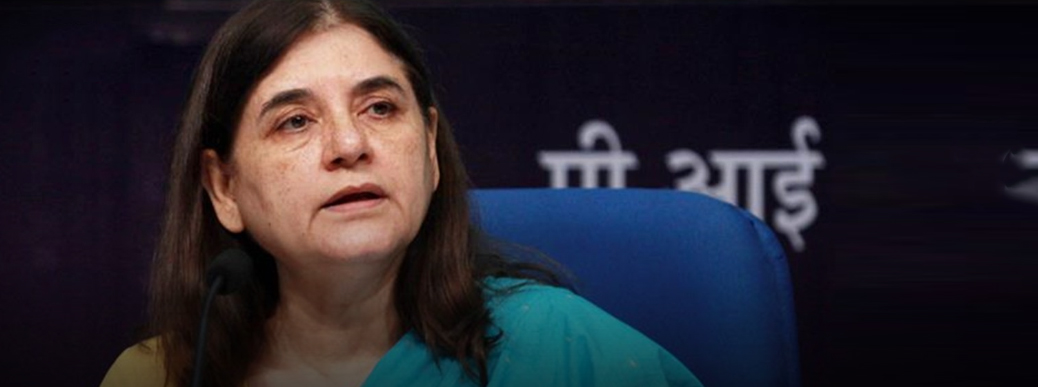
- The government told parliament that a mediation cell would be set up under the apex child rights body, the national commission for protection of child rights (NCPCR), to resolve child custody disputes arising from cases of transnational marital discord.
- It will be established under the NCPCR chairperson to resolve the cases of children who were taken away by one of the spouses without the permission of the other due to marital discord from other countries to India or vice versa.






